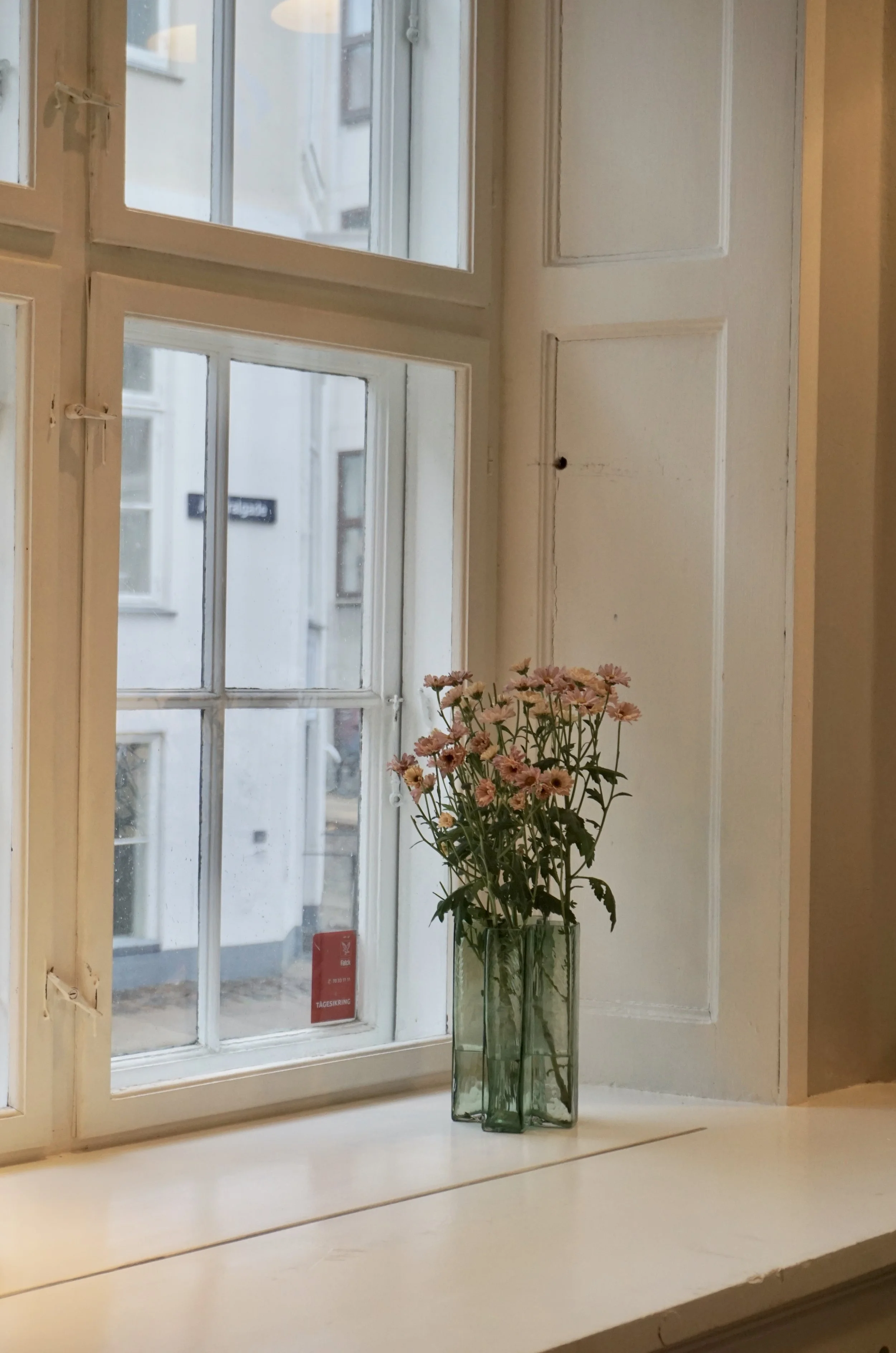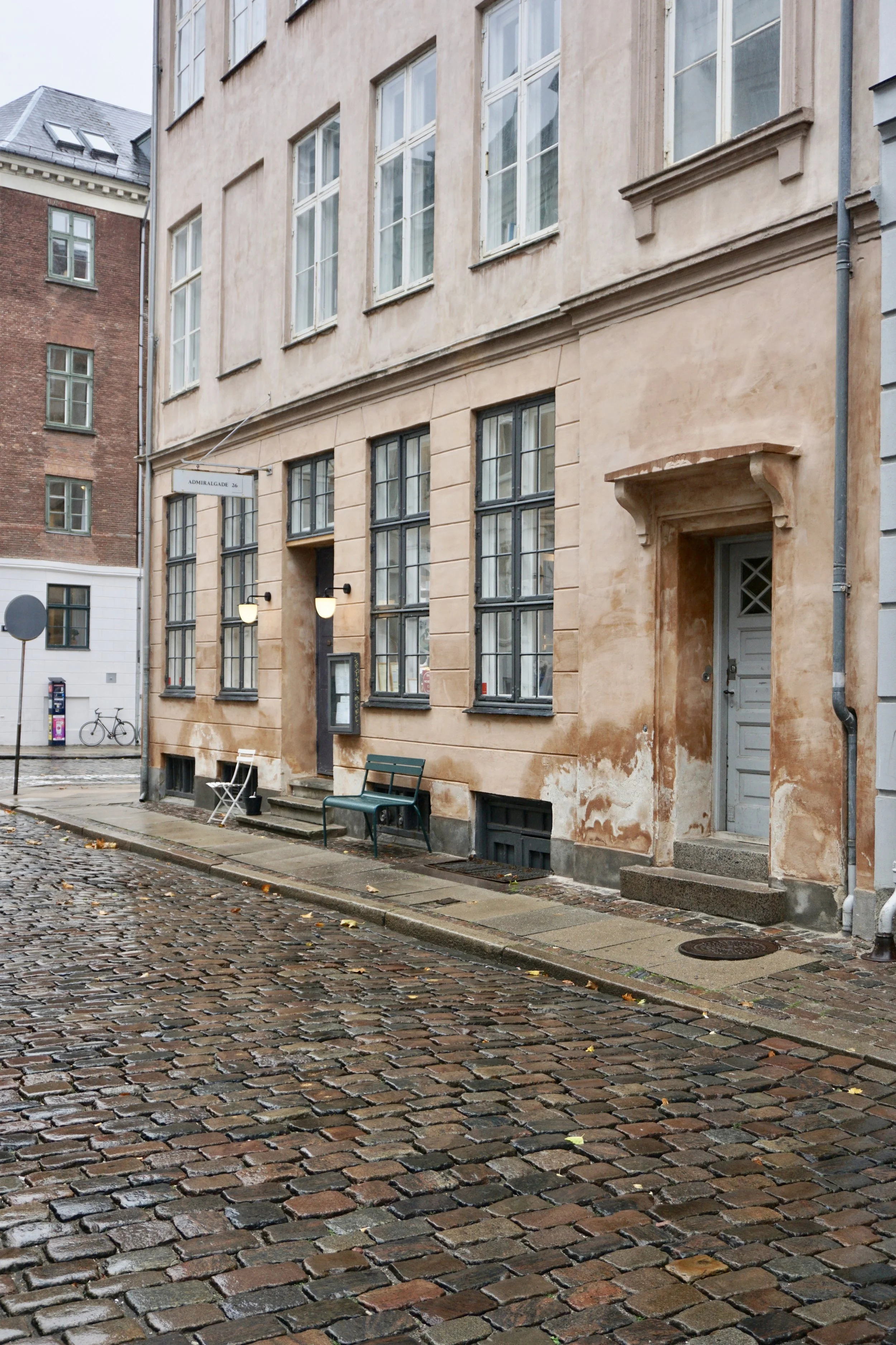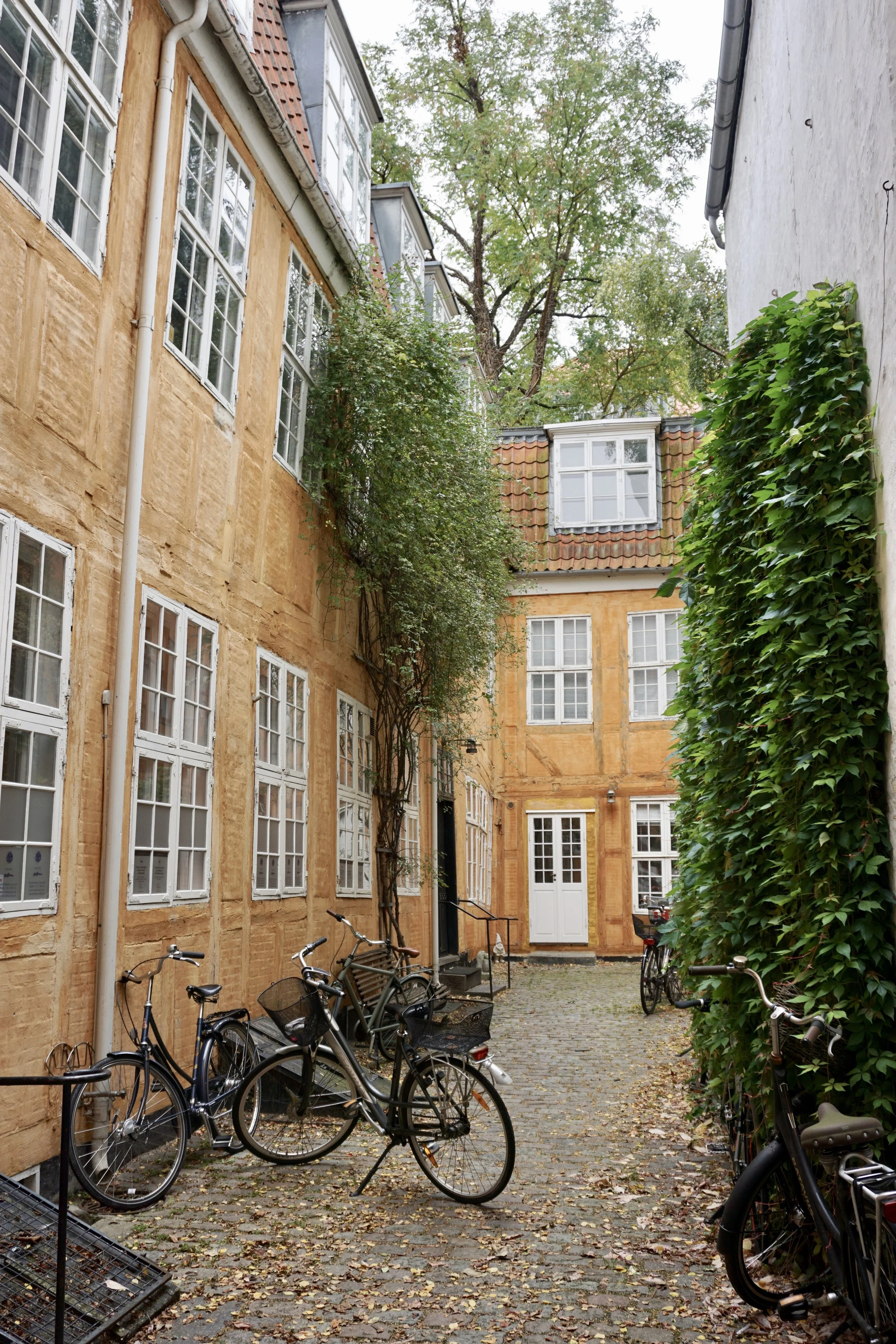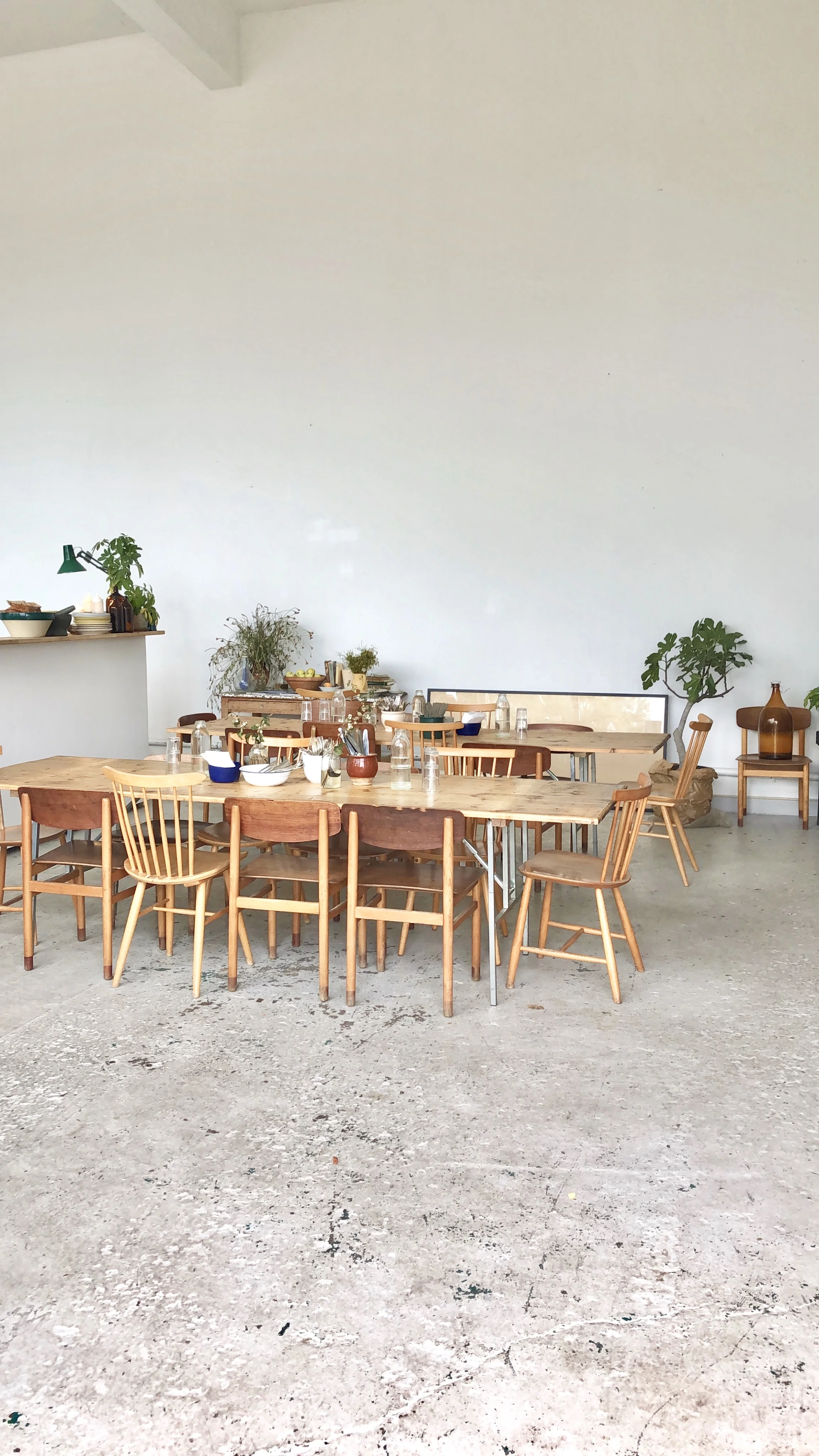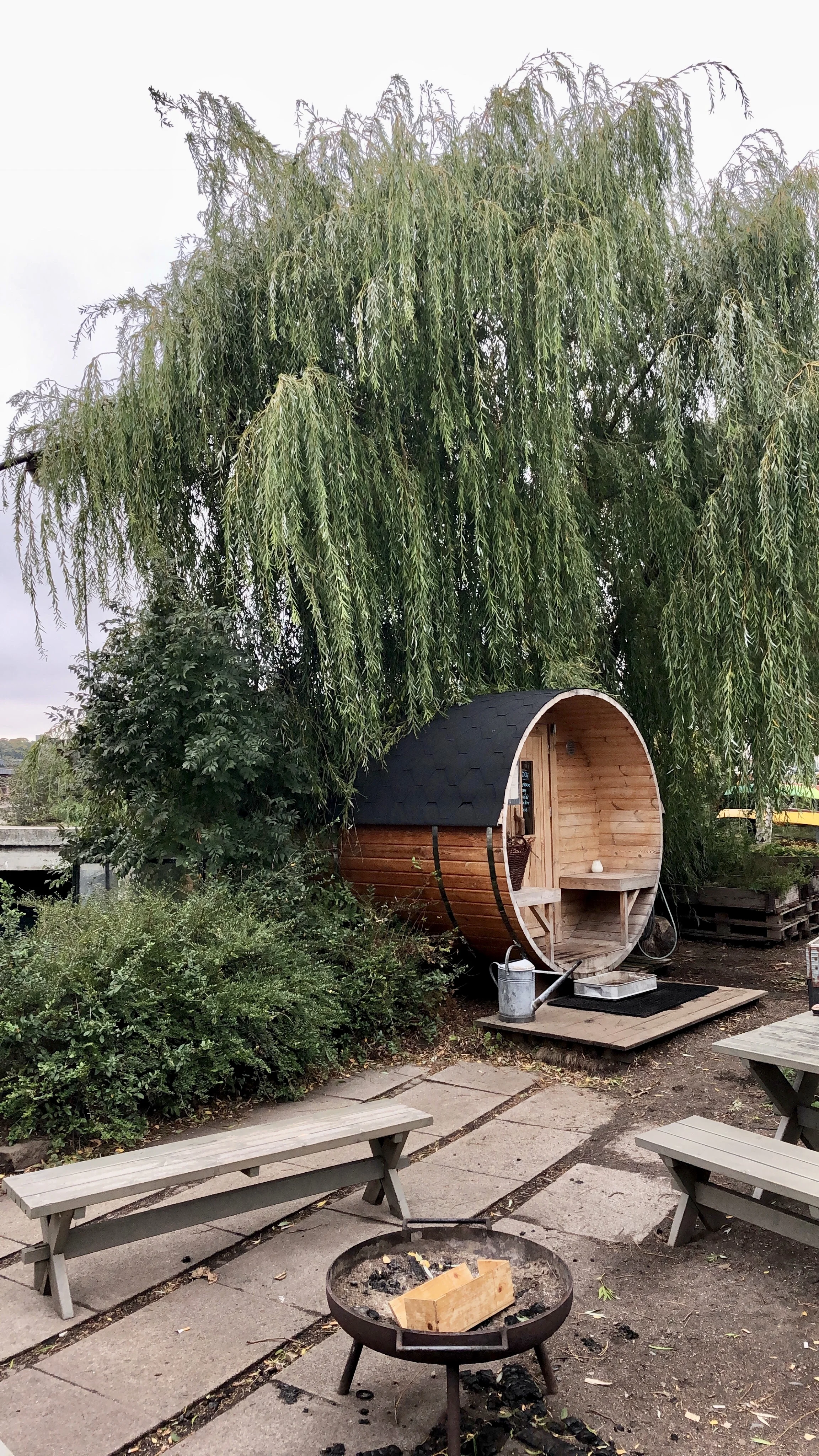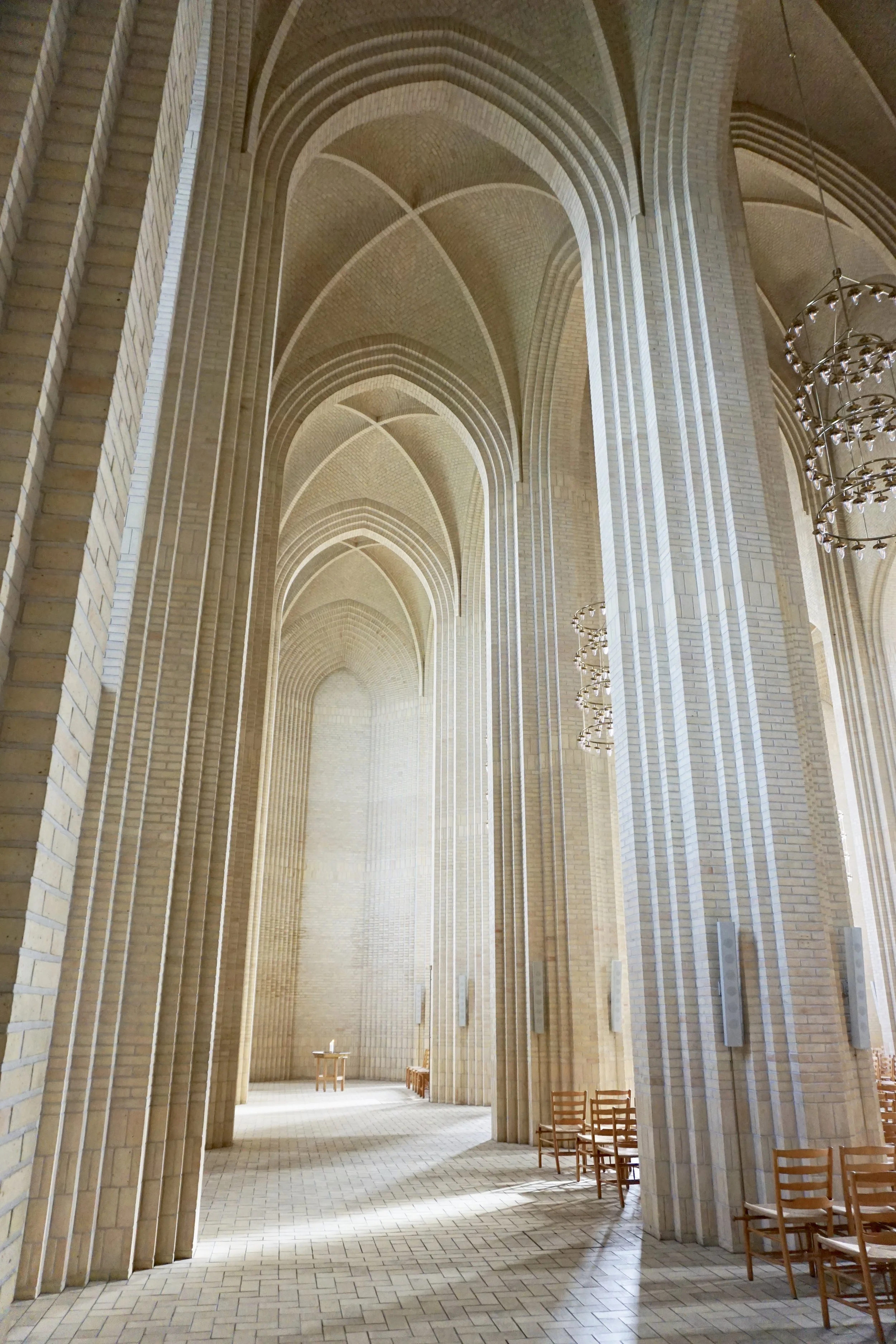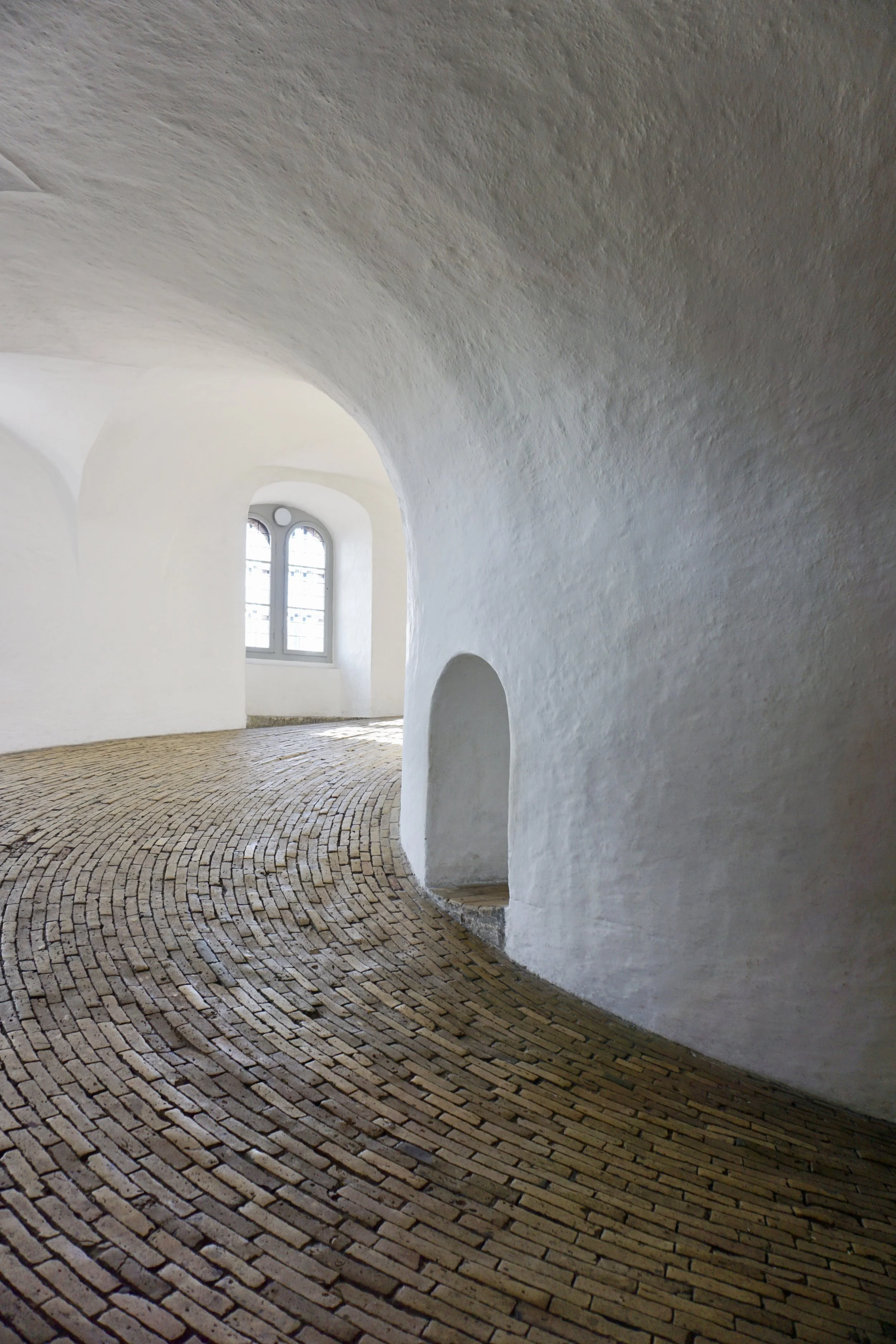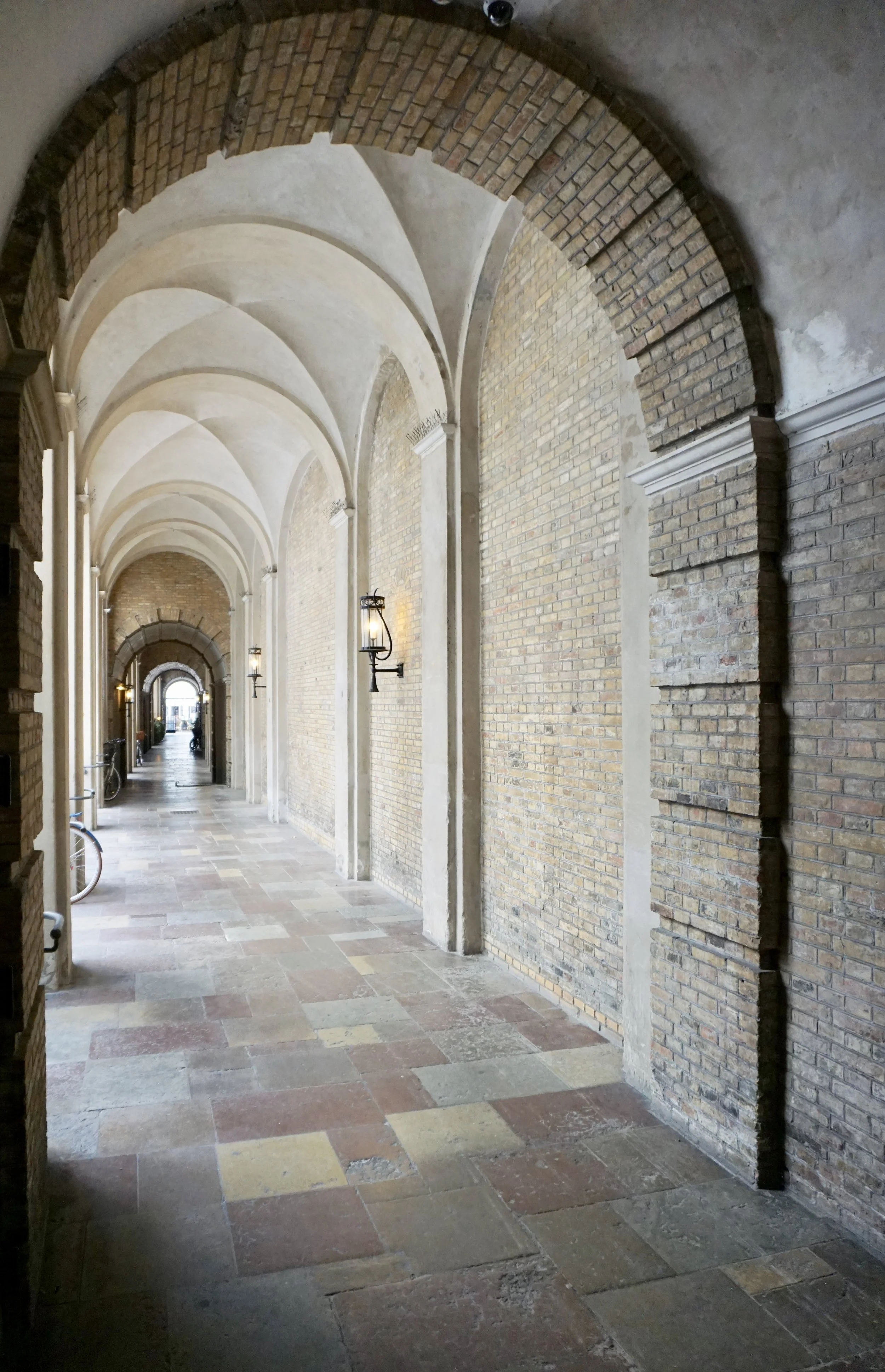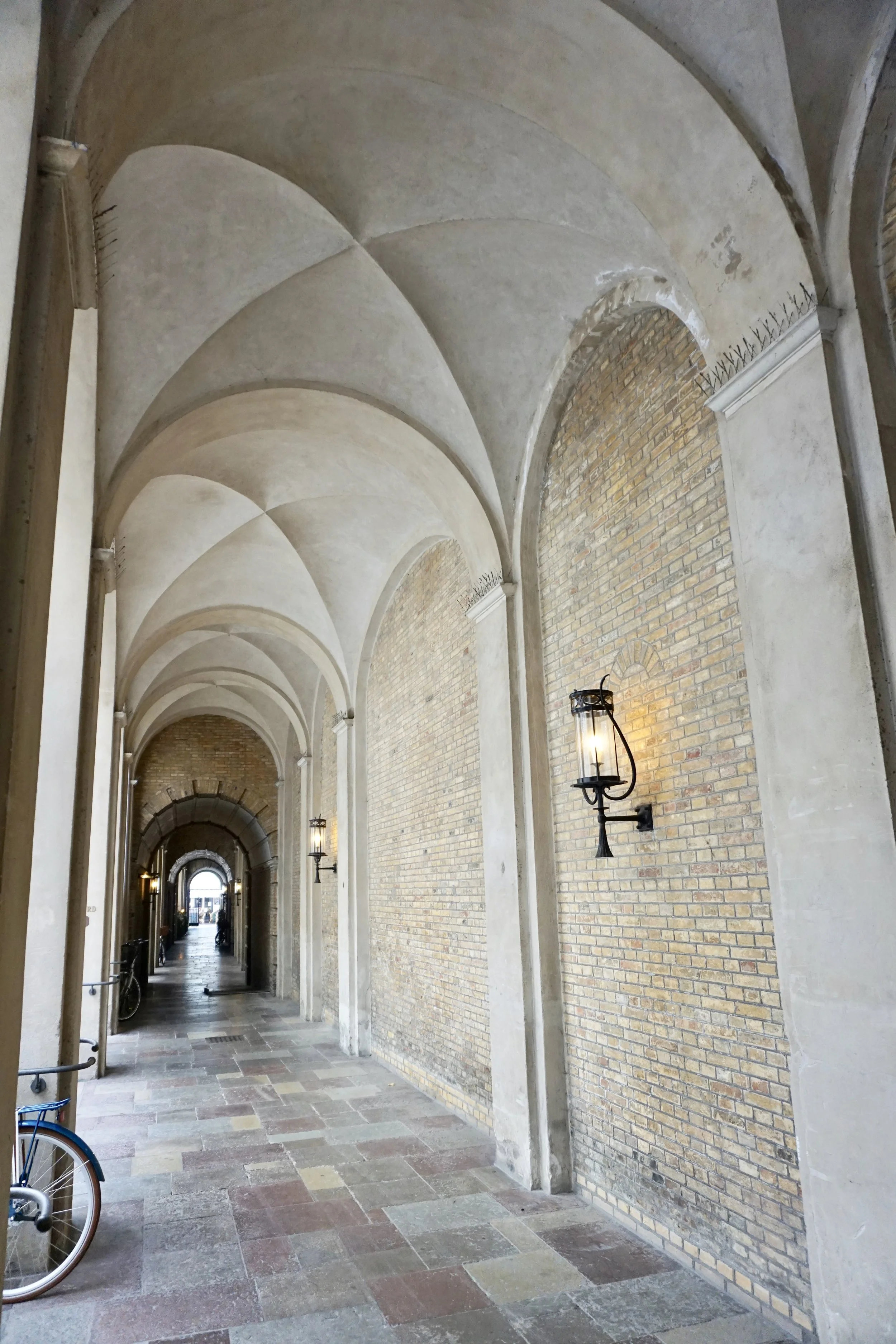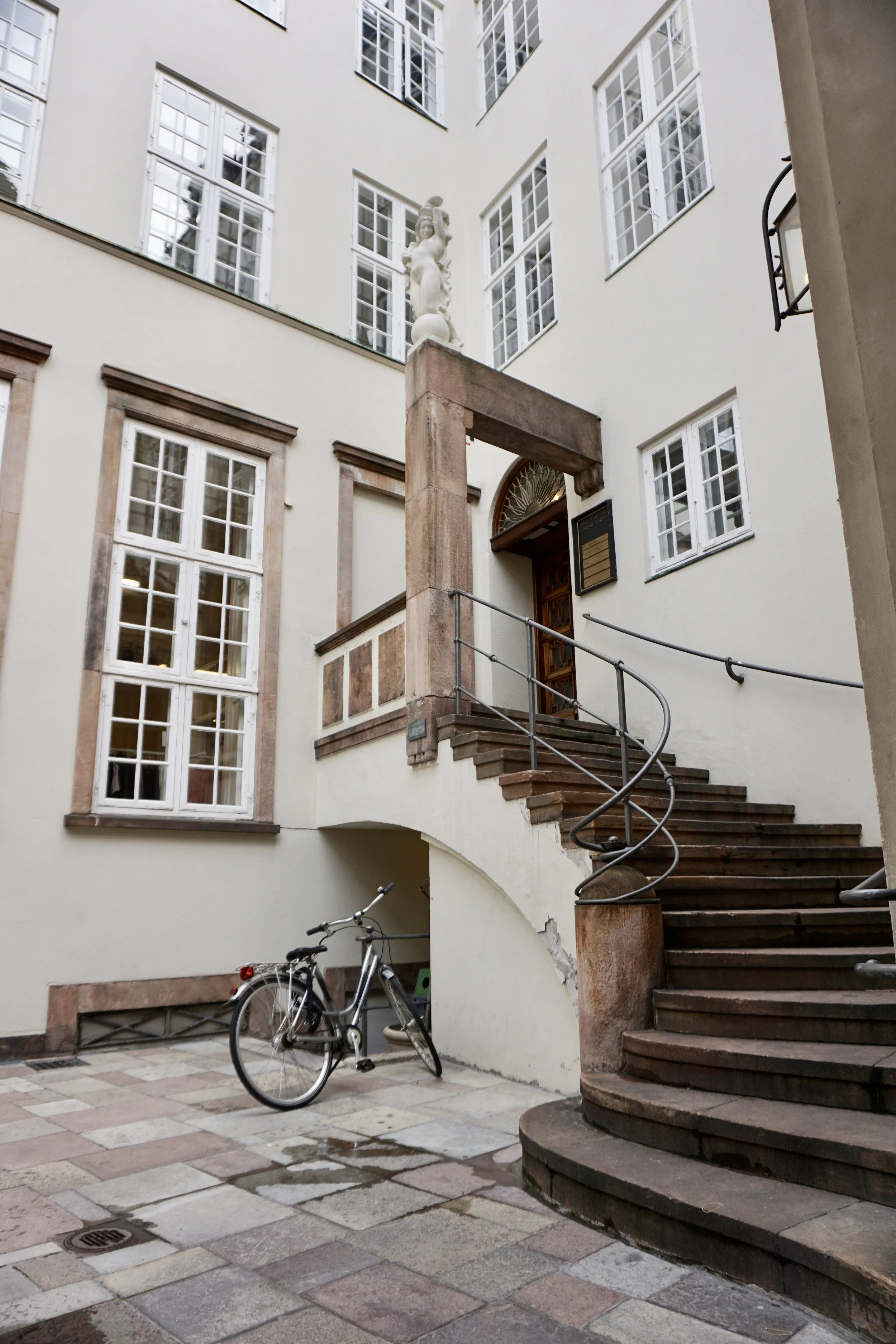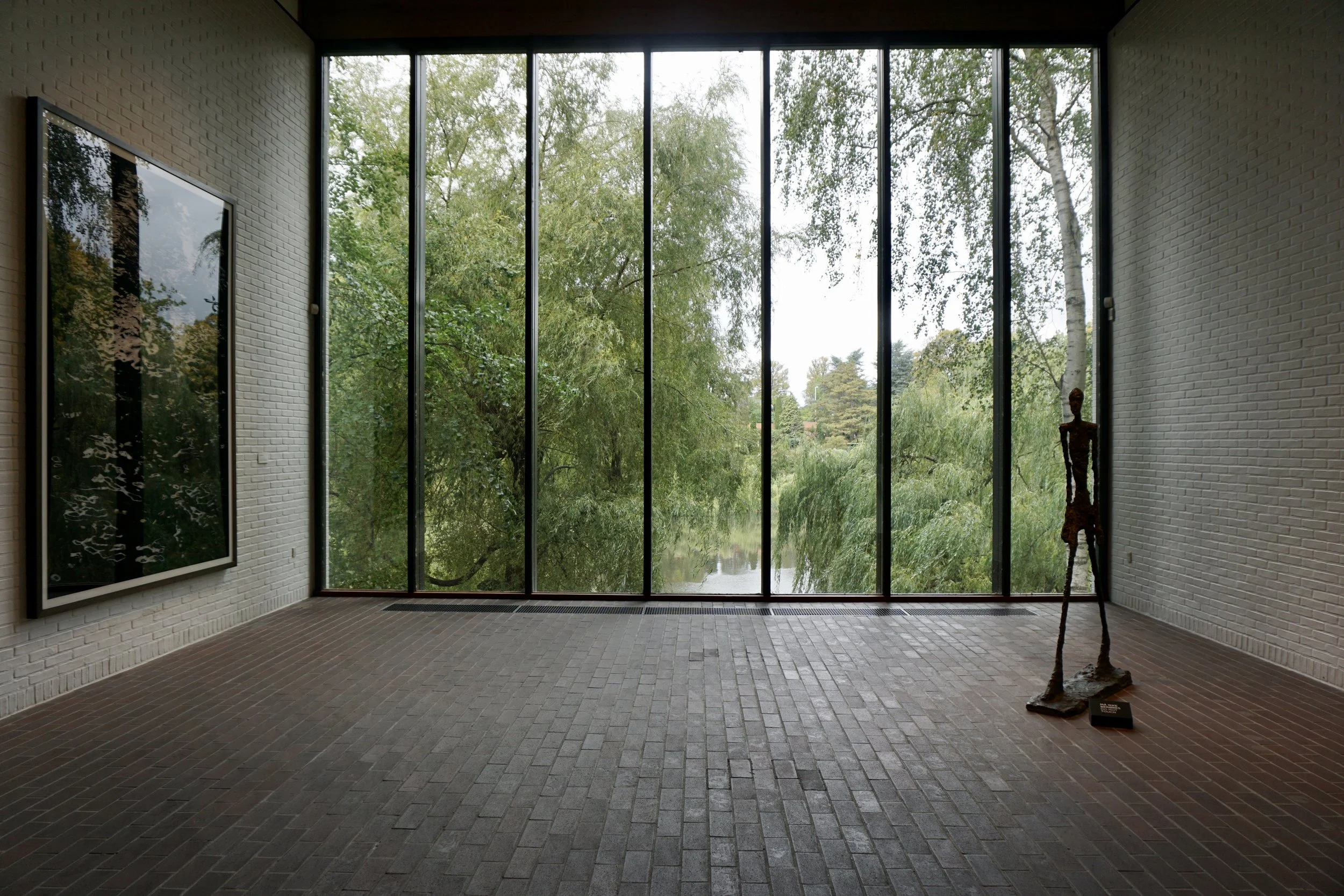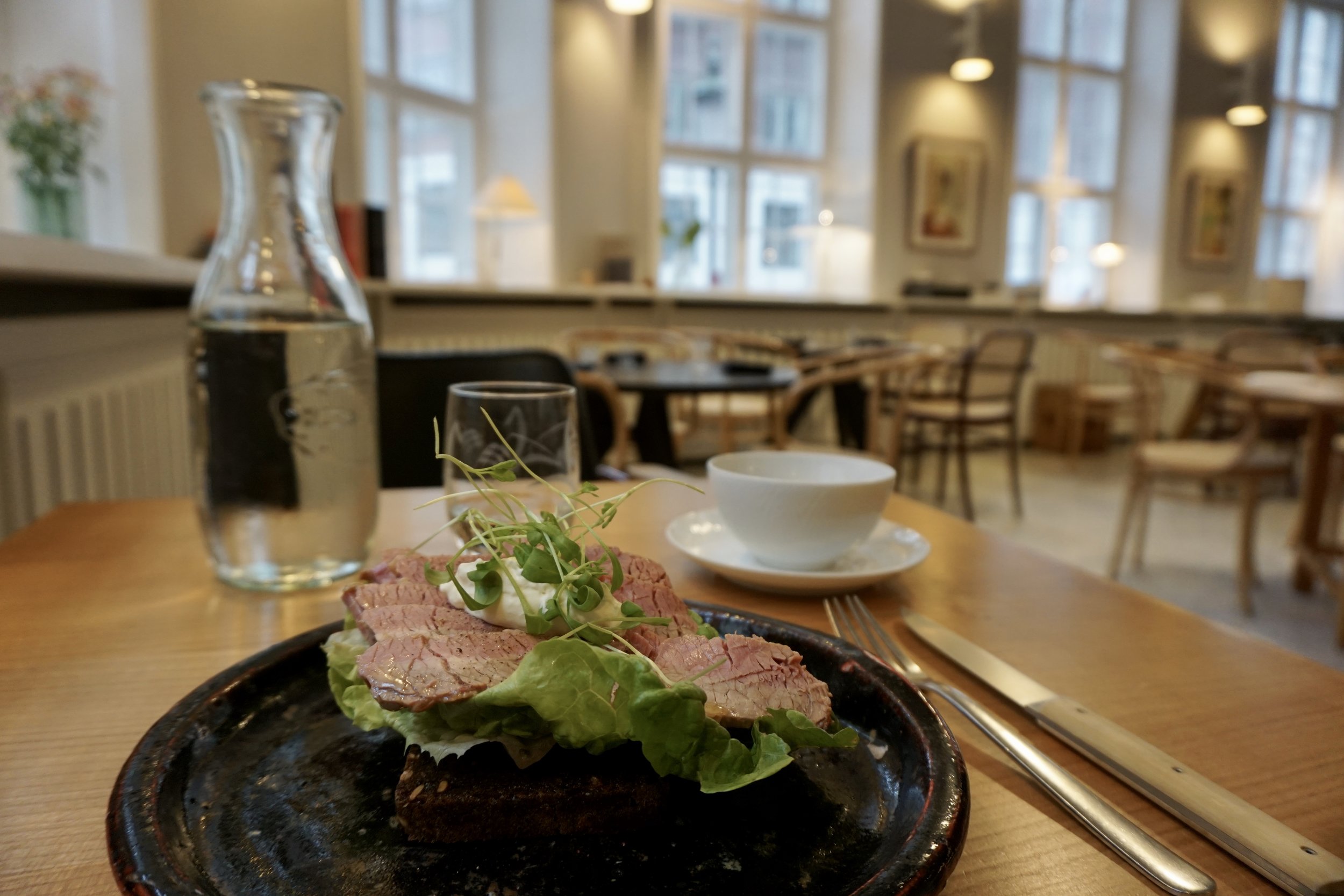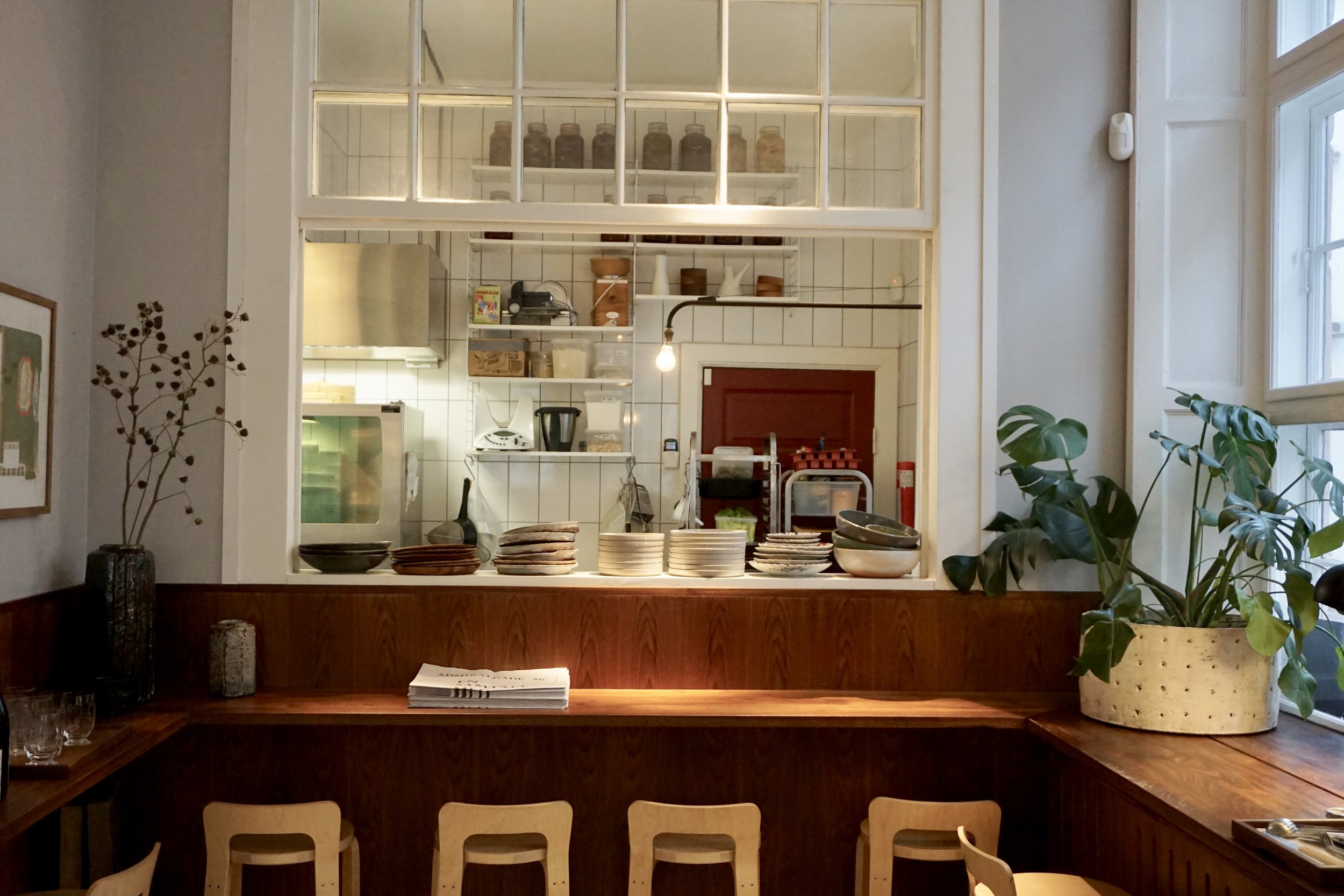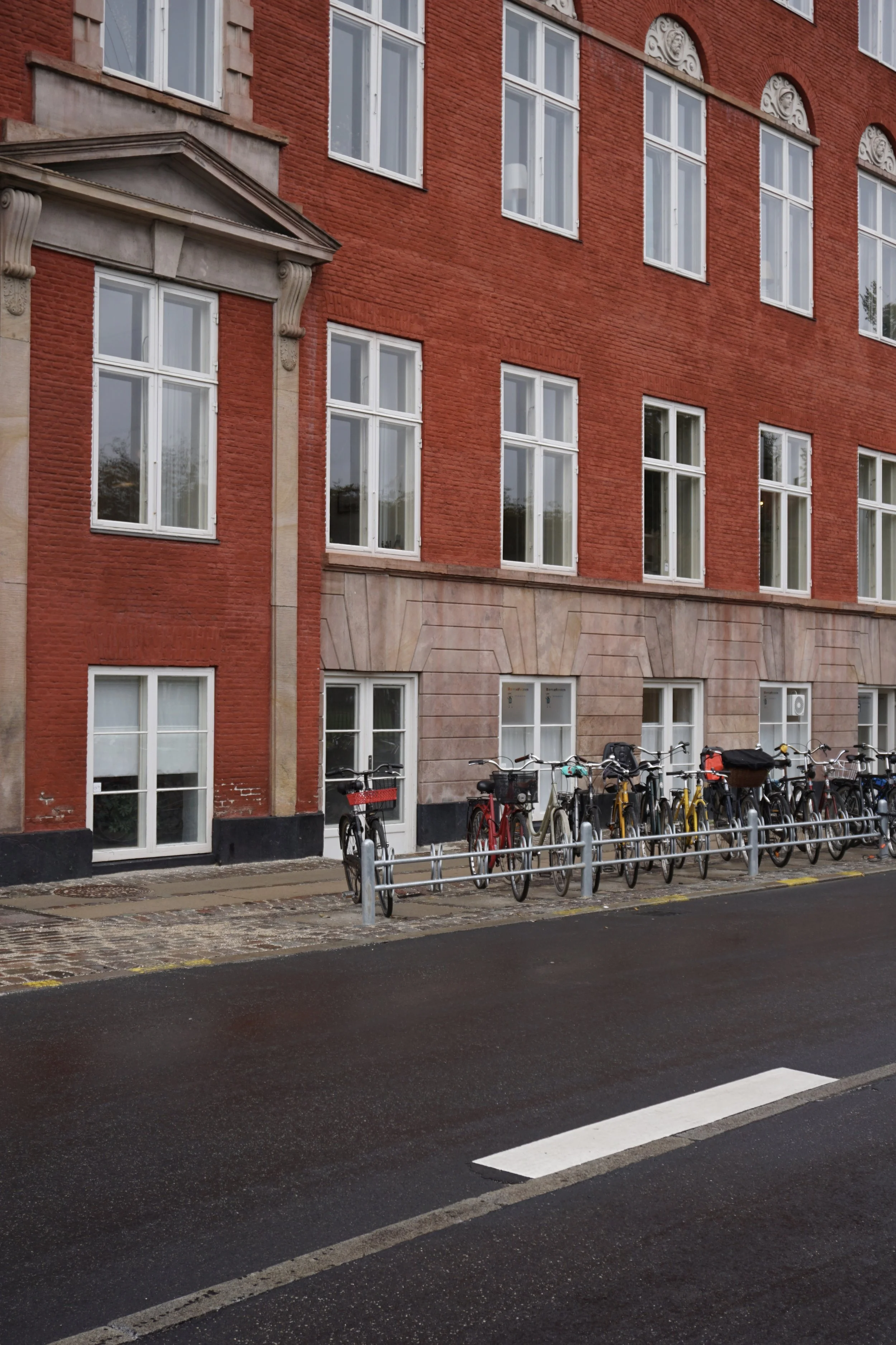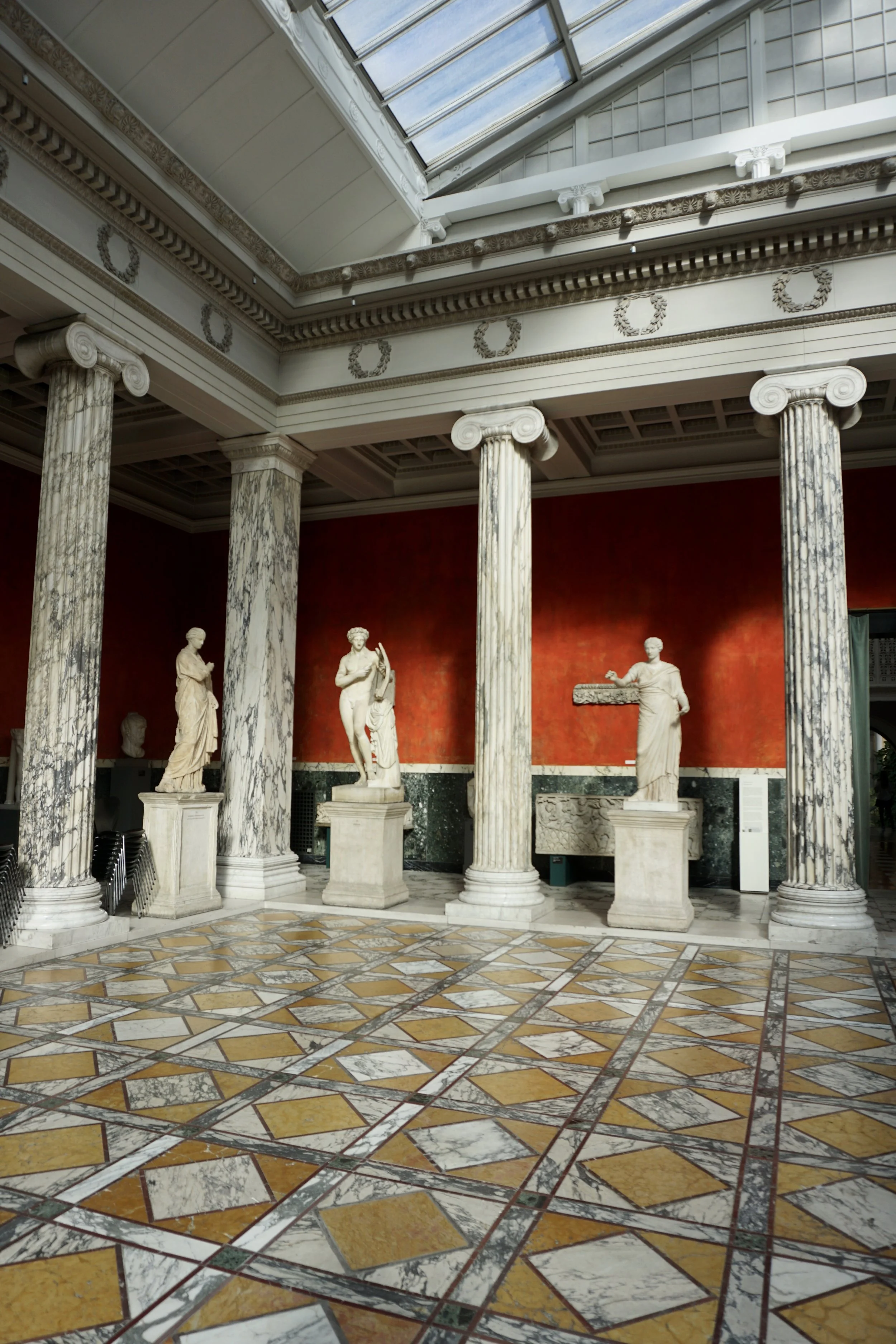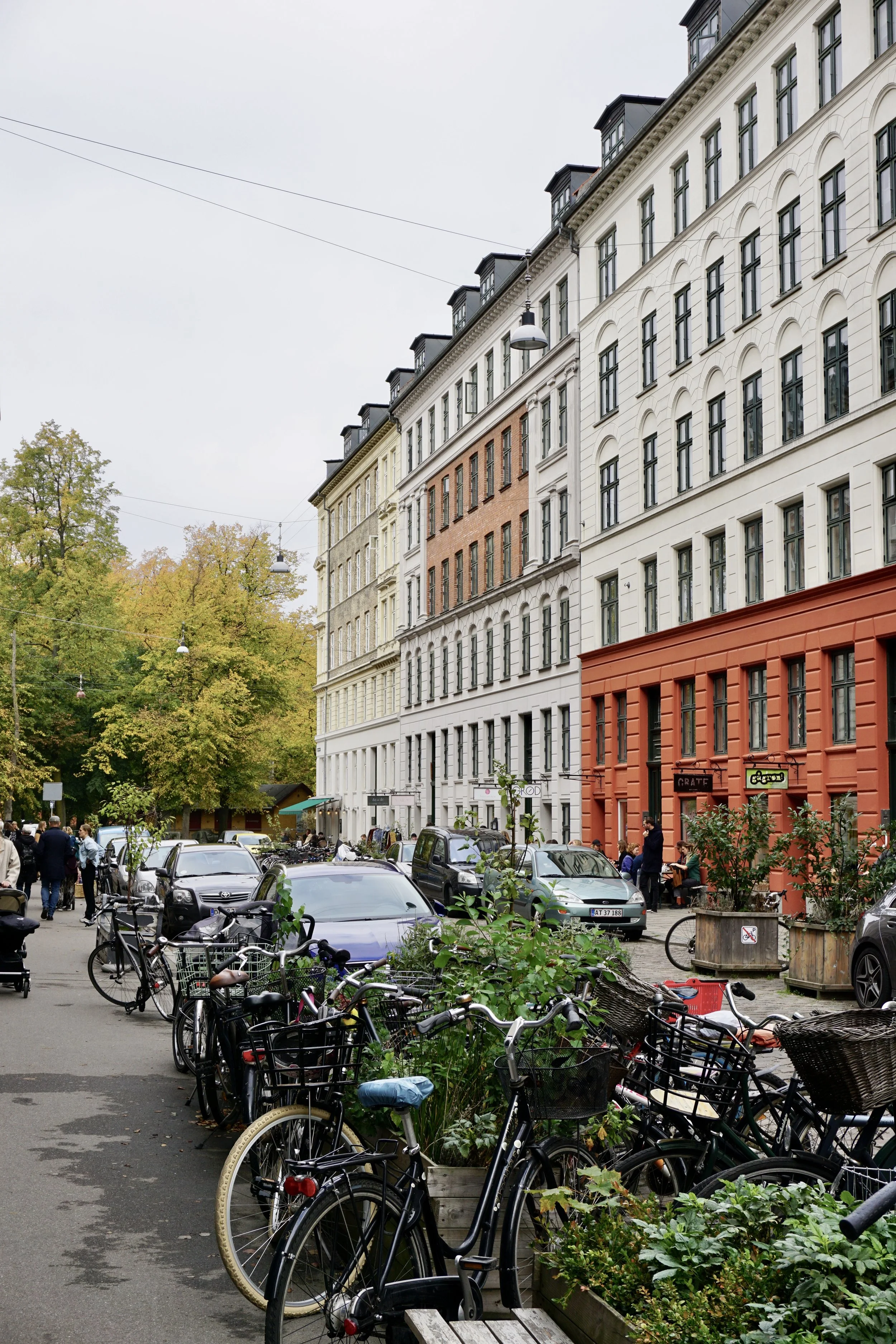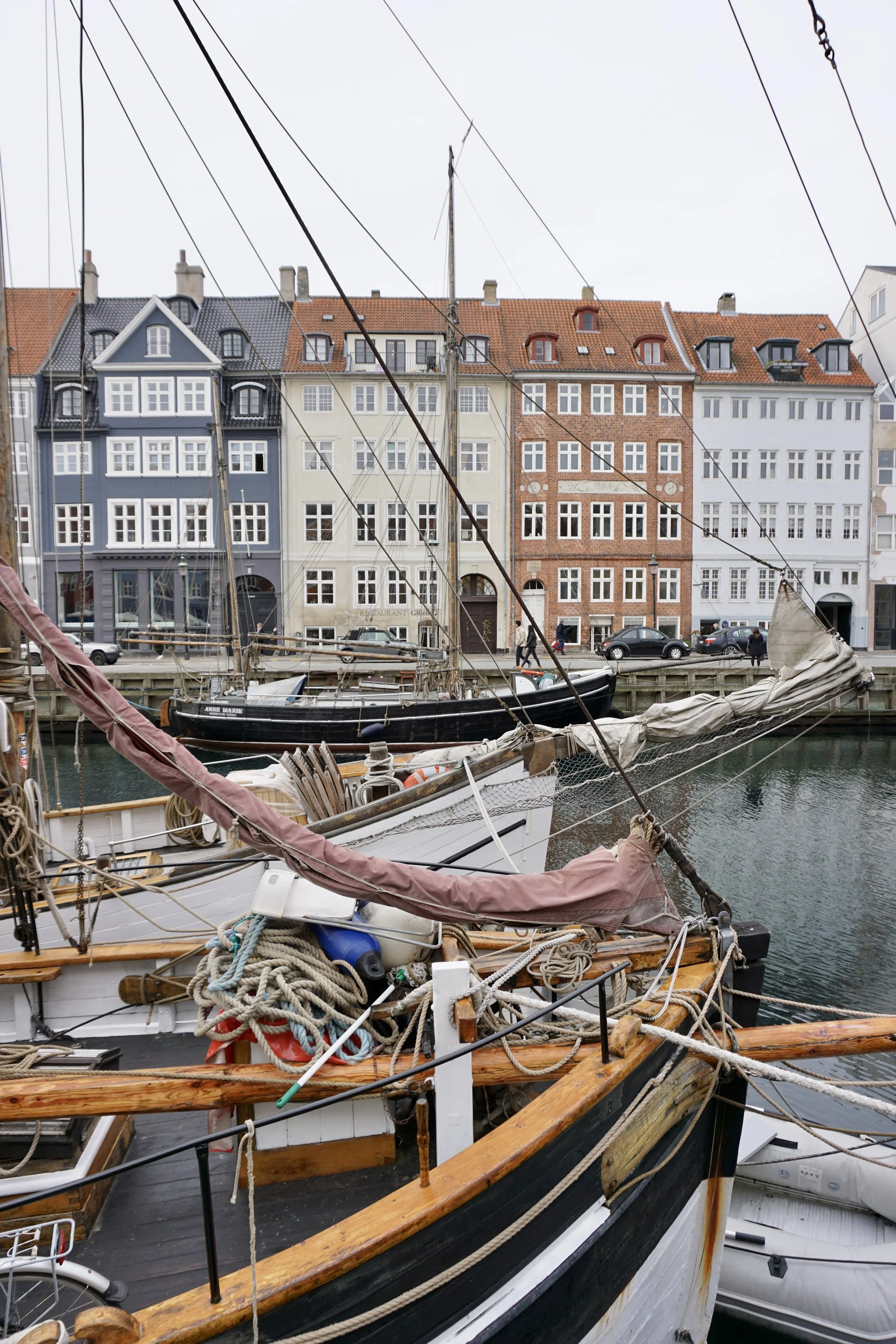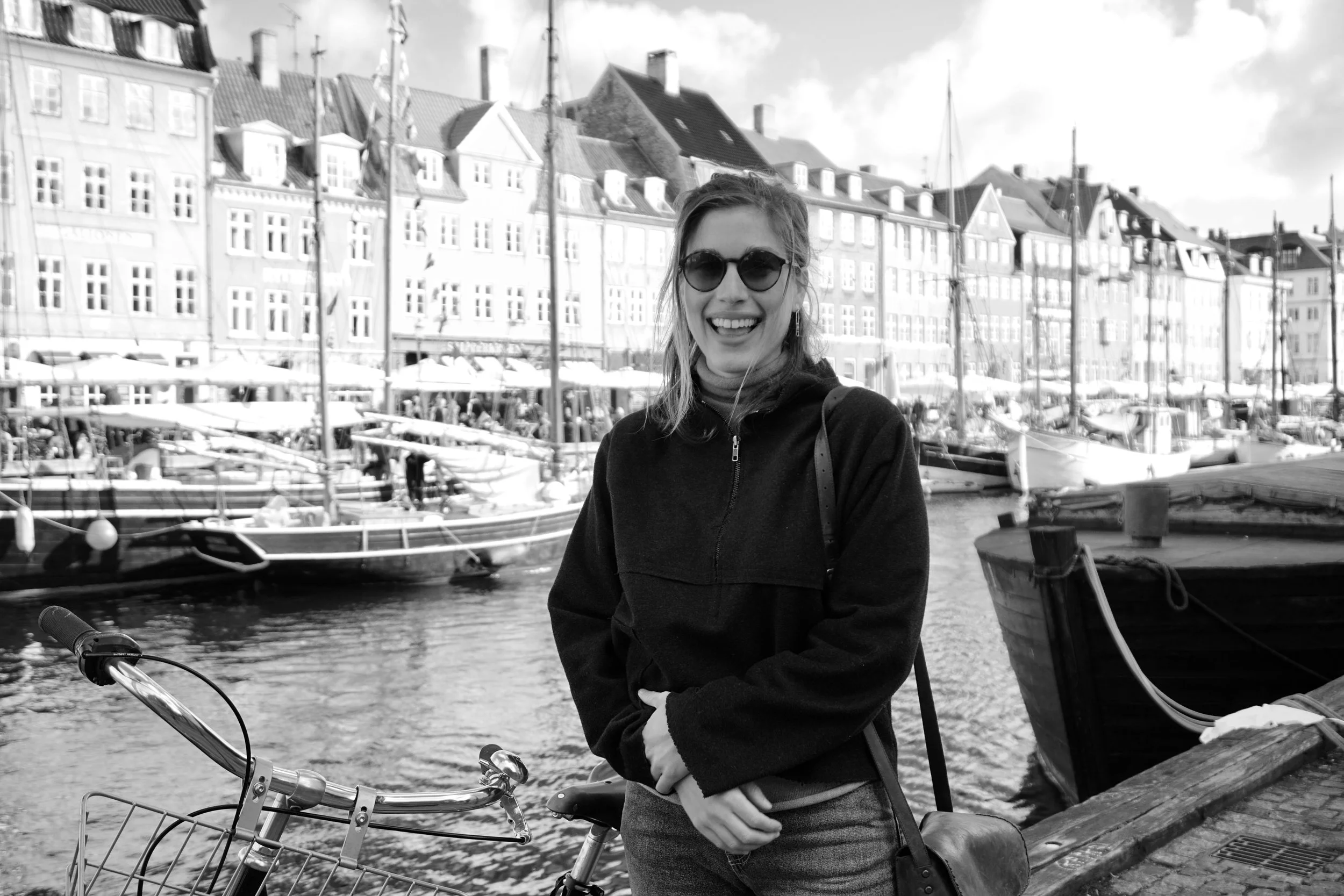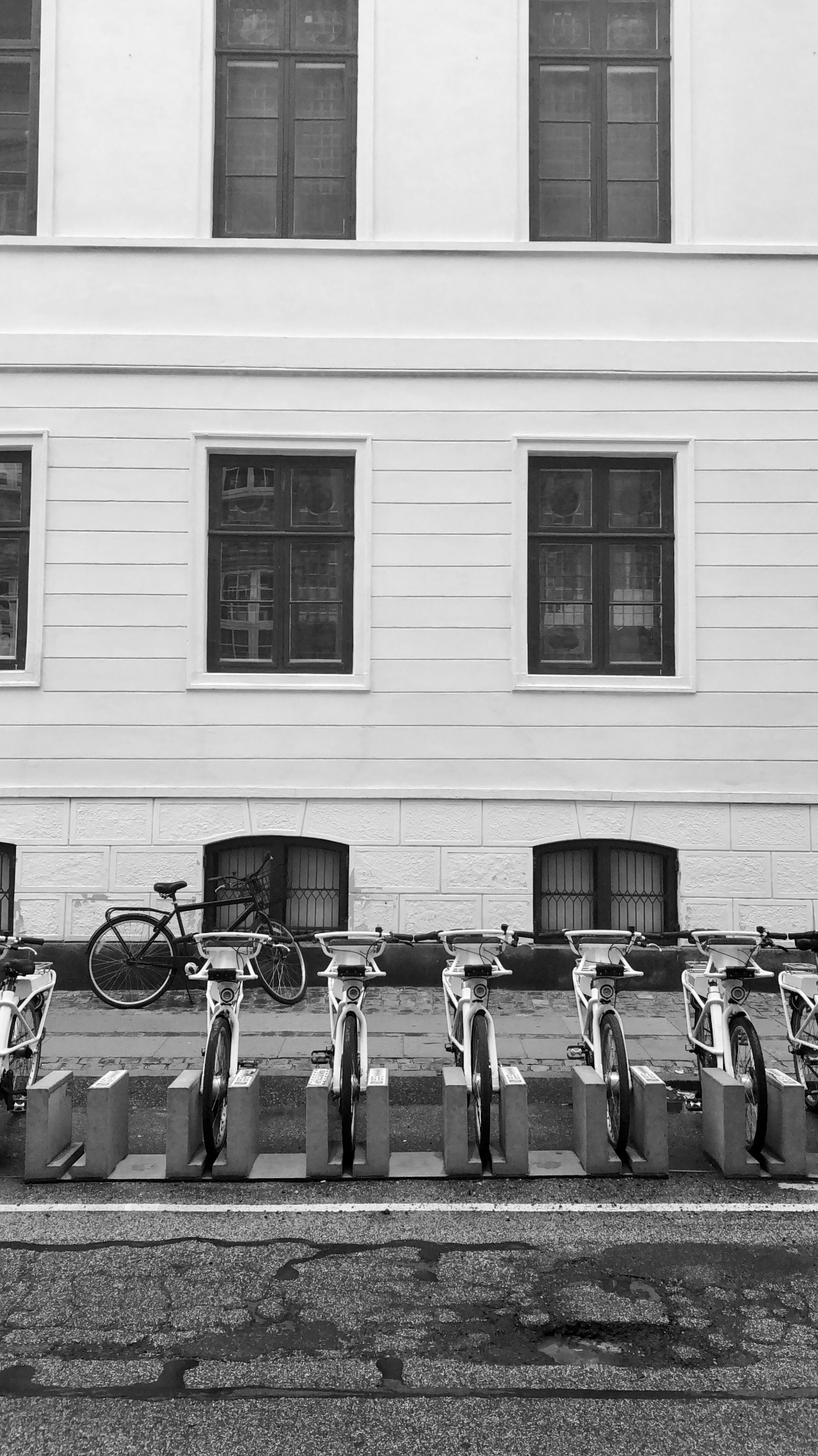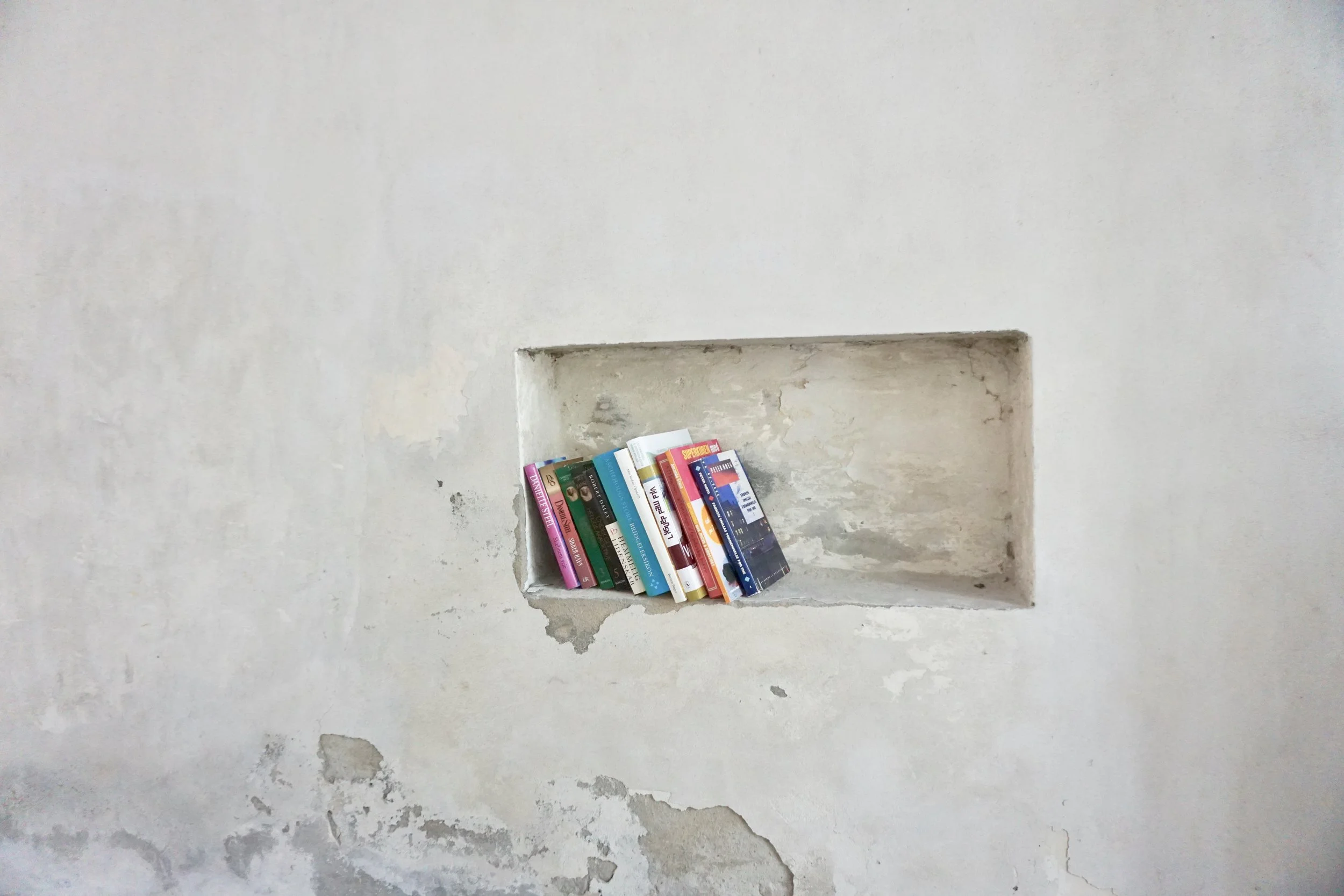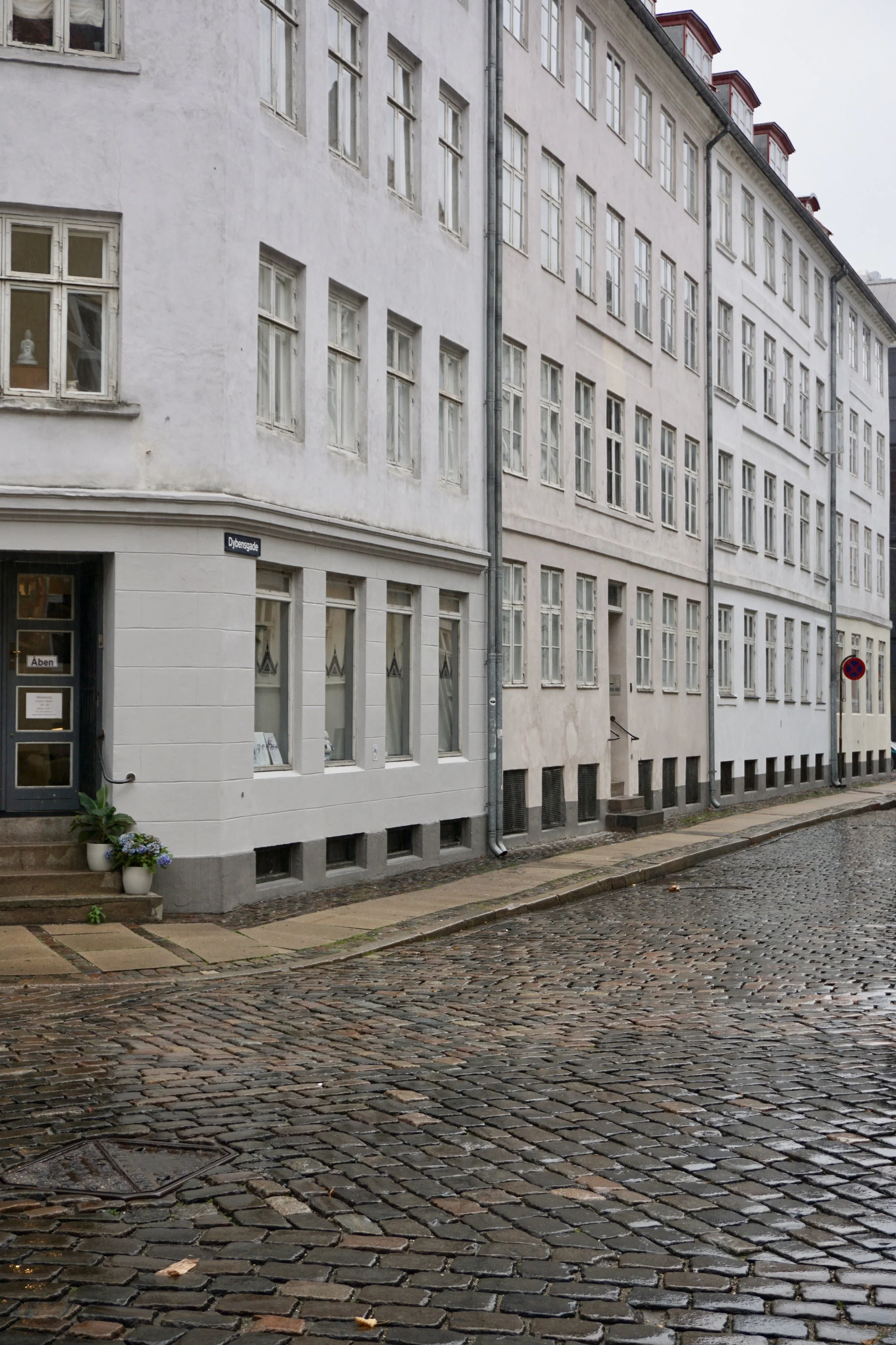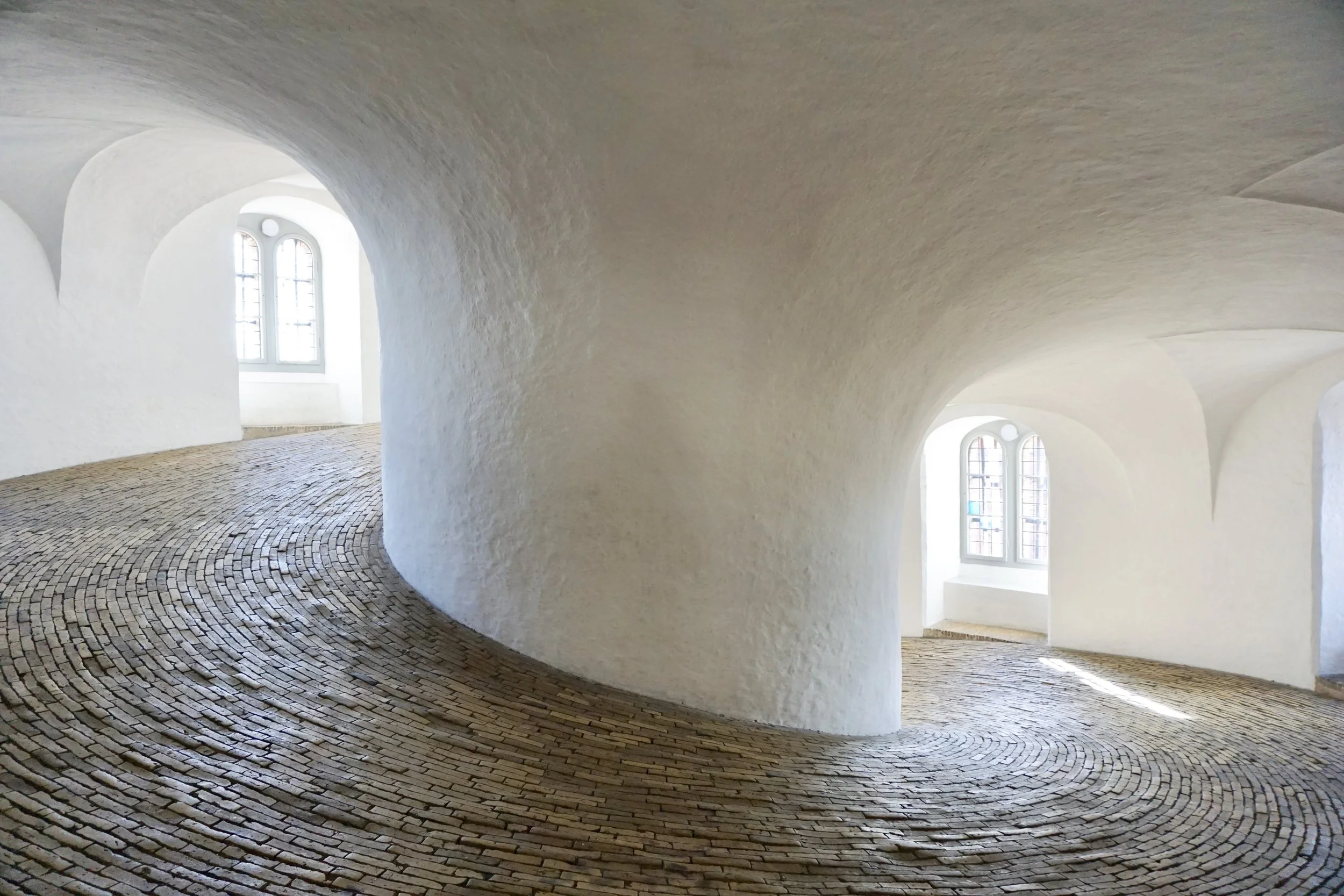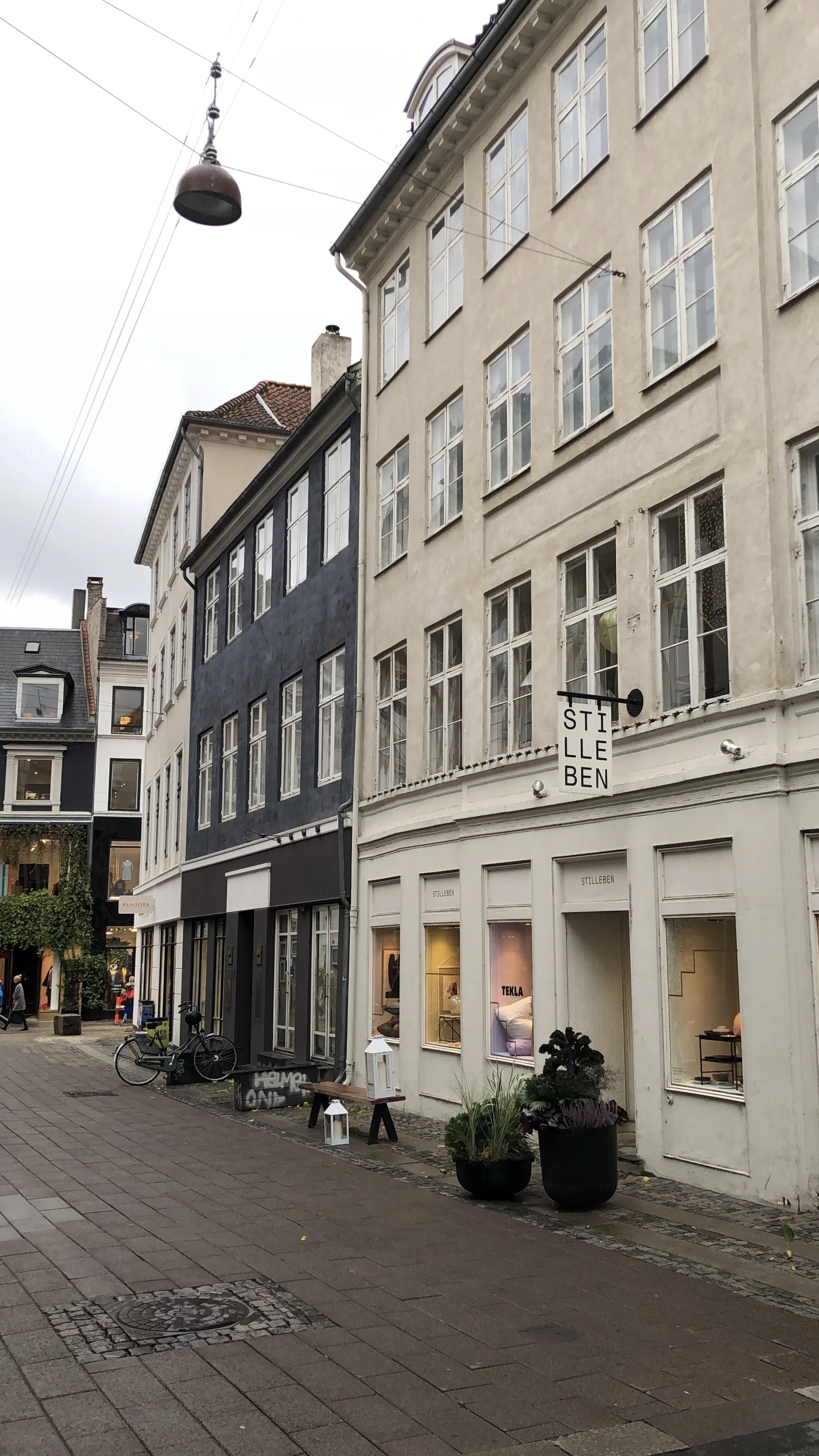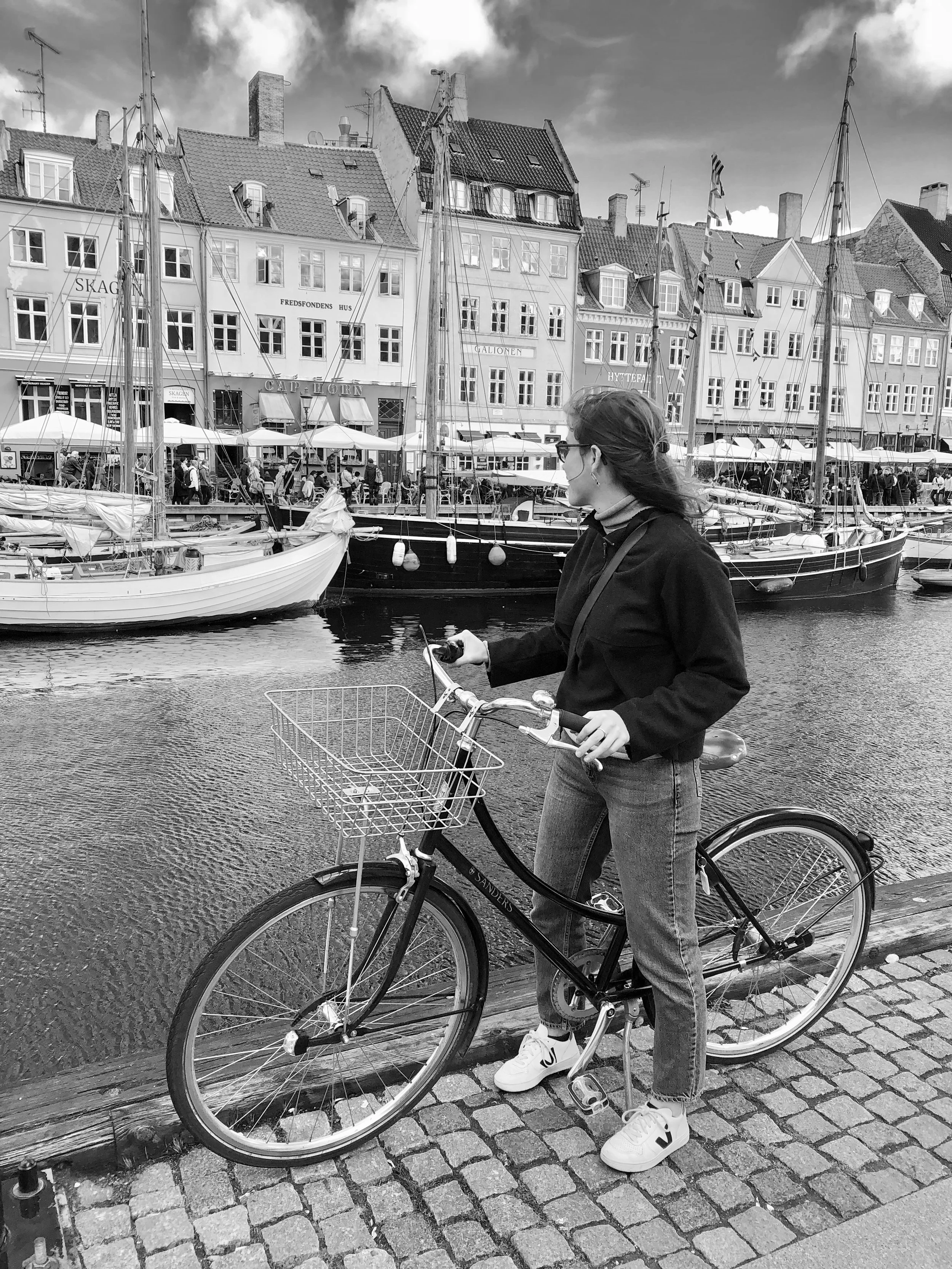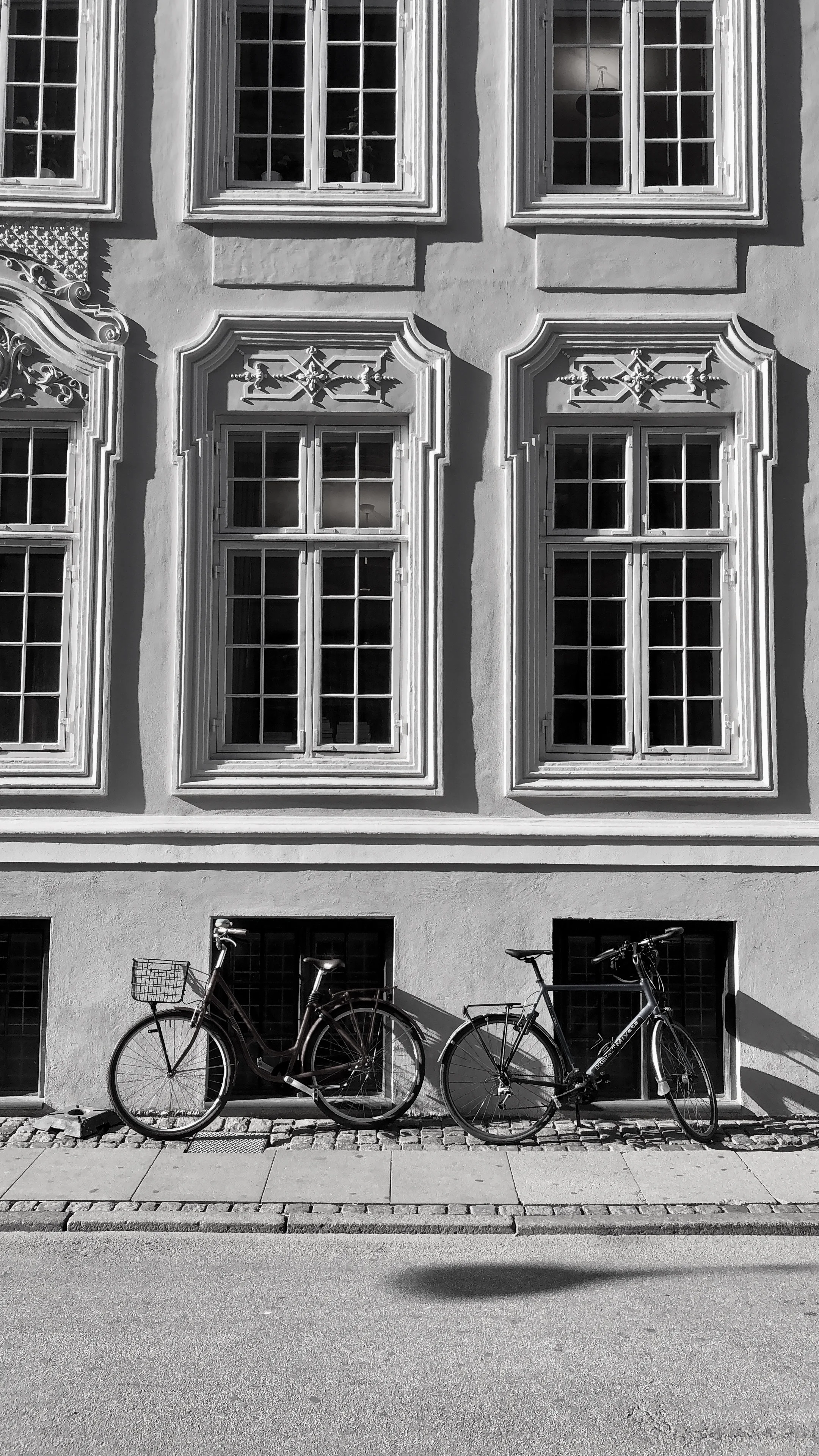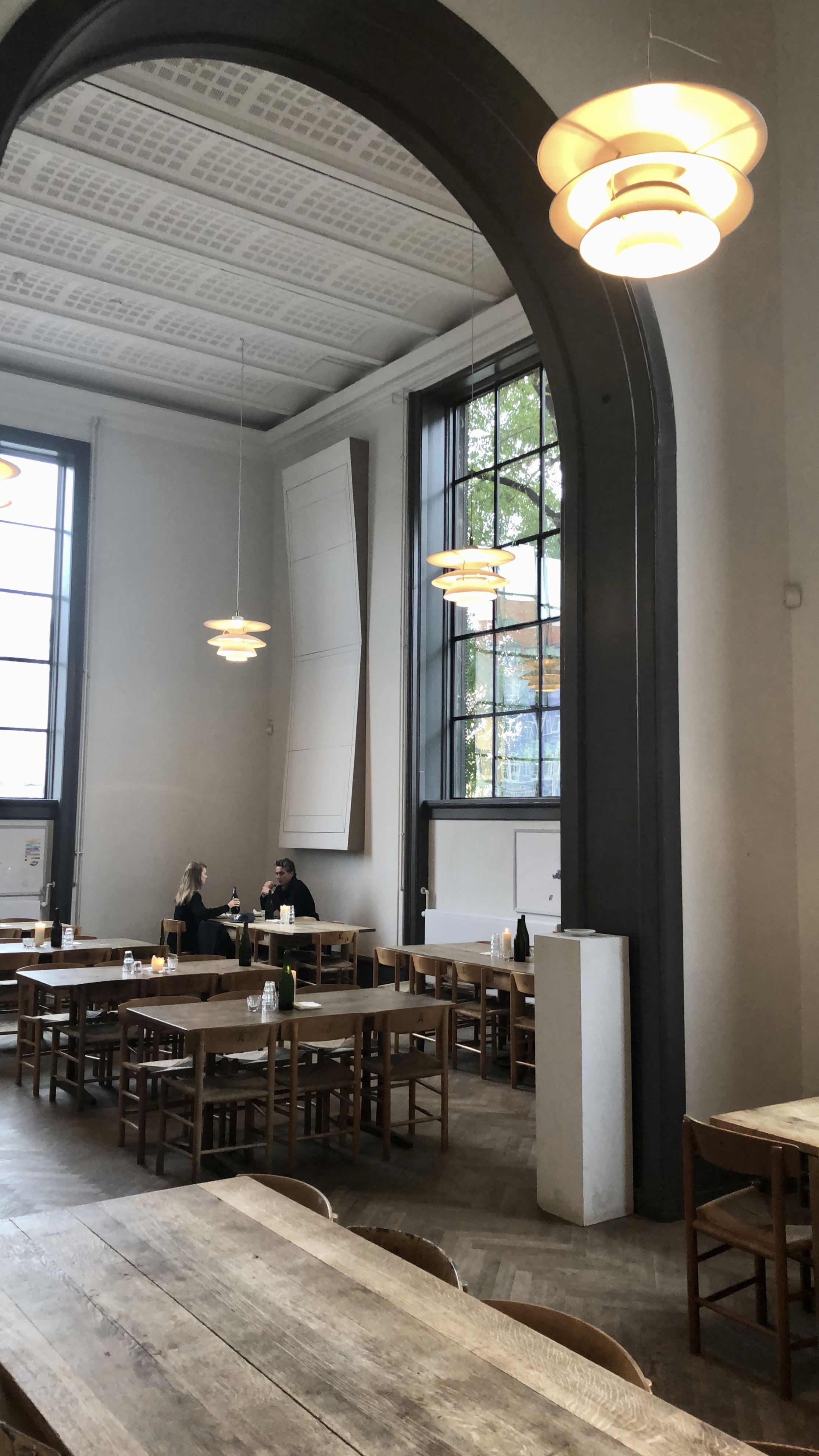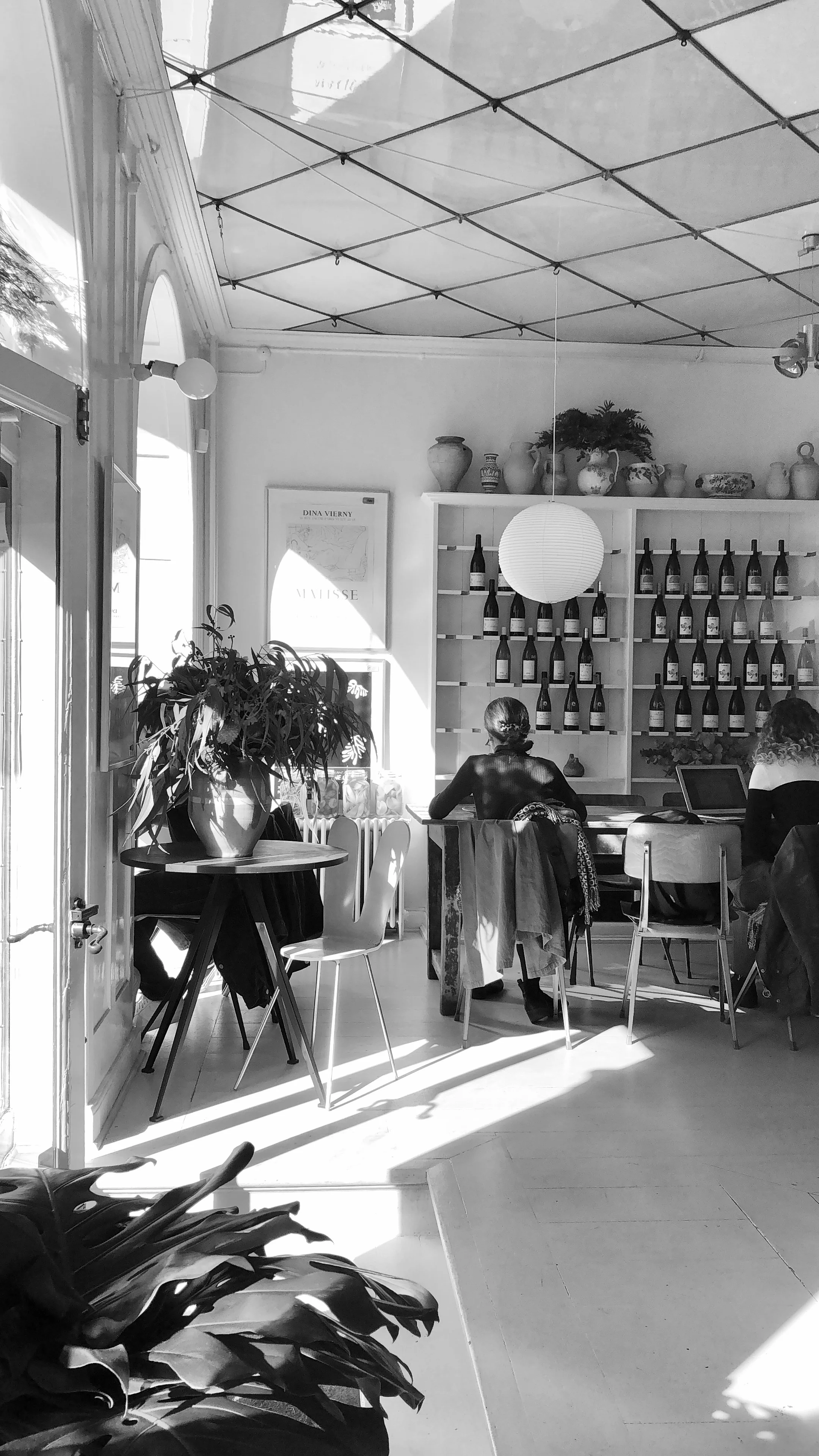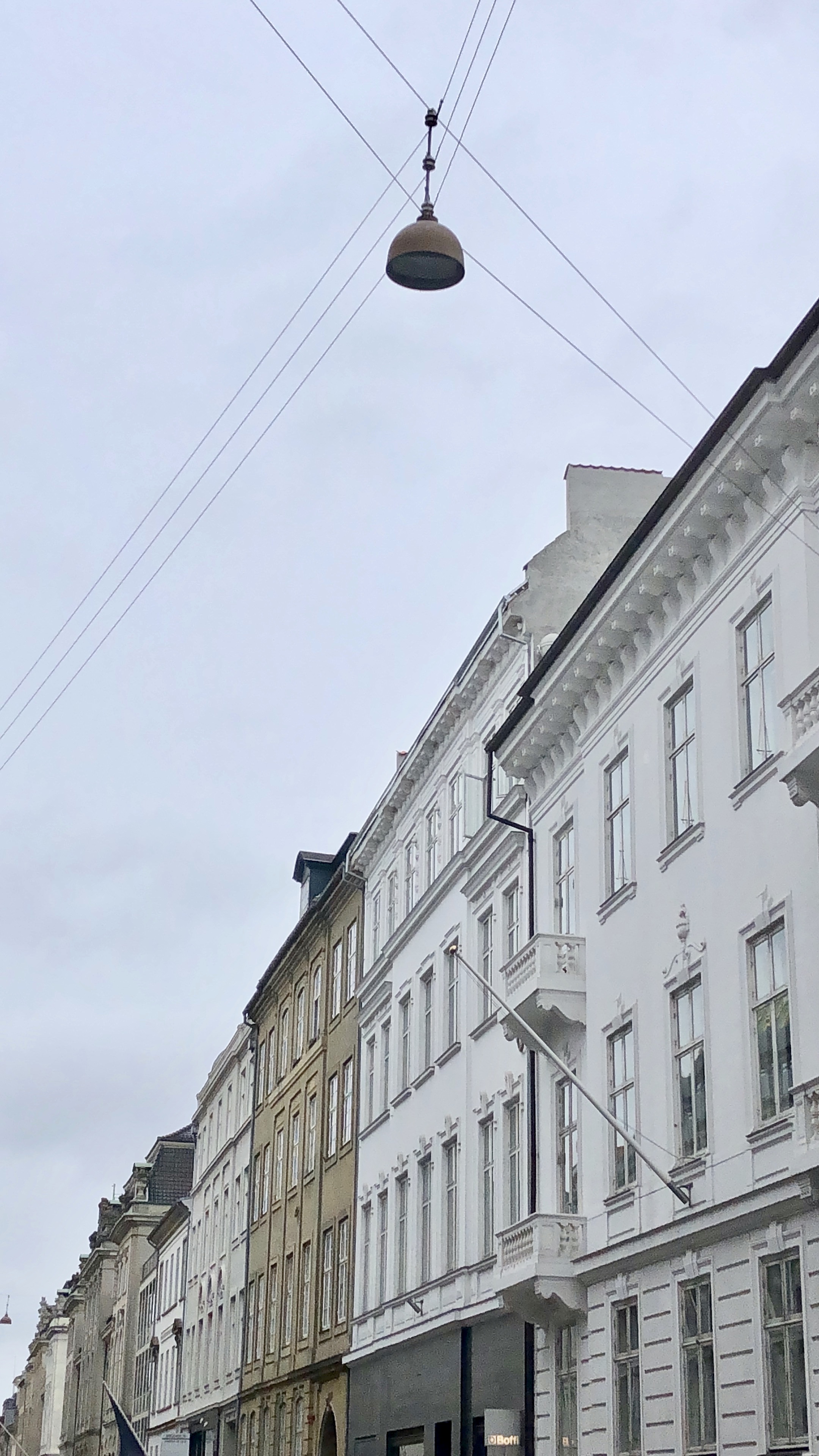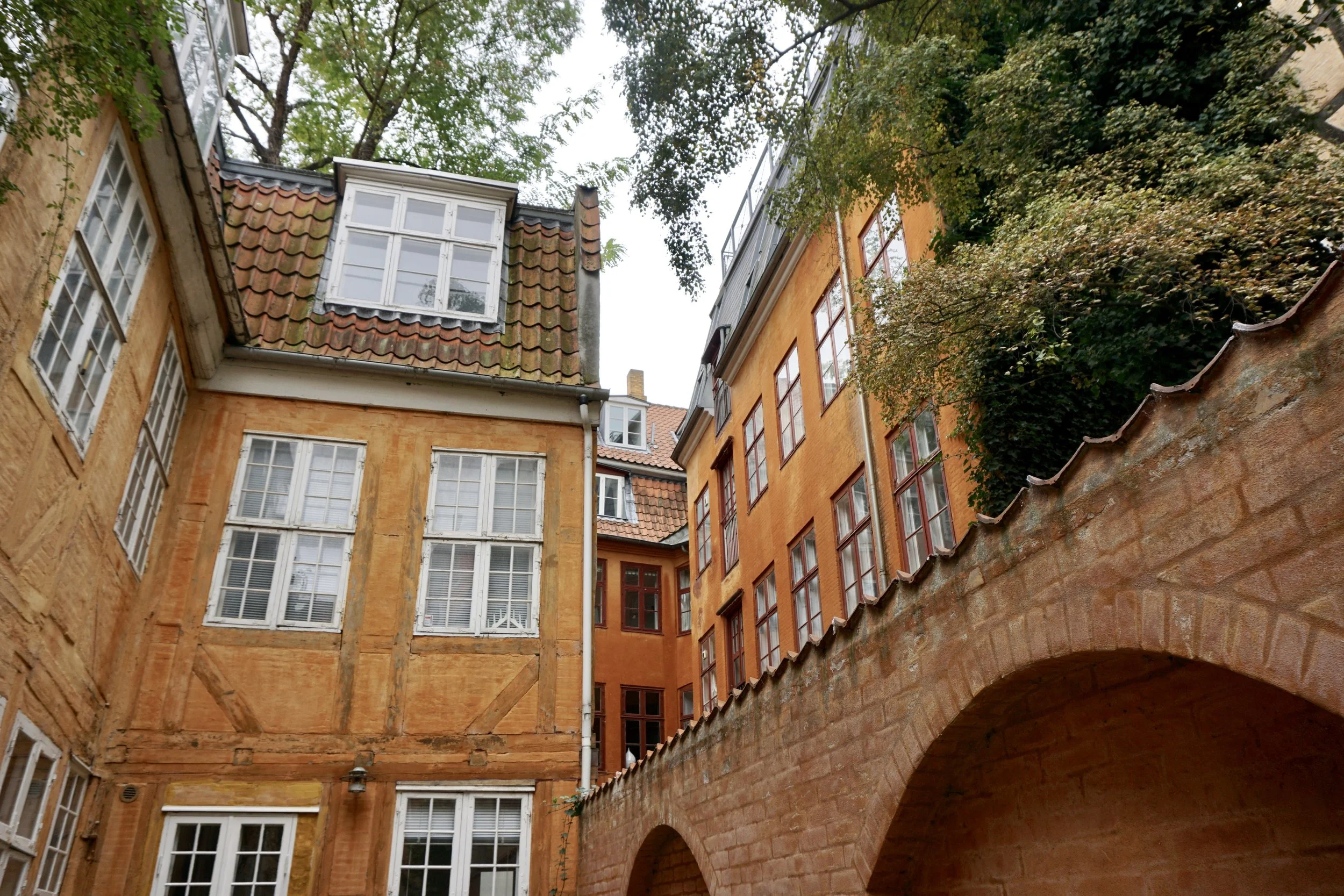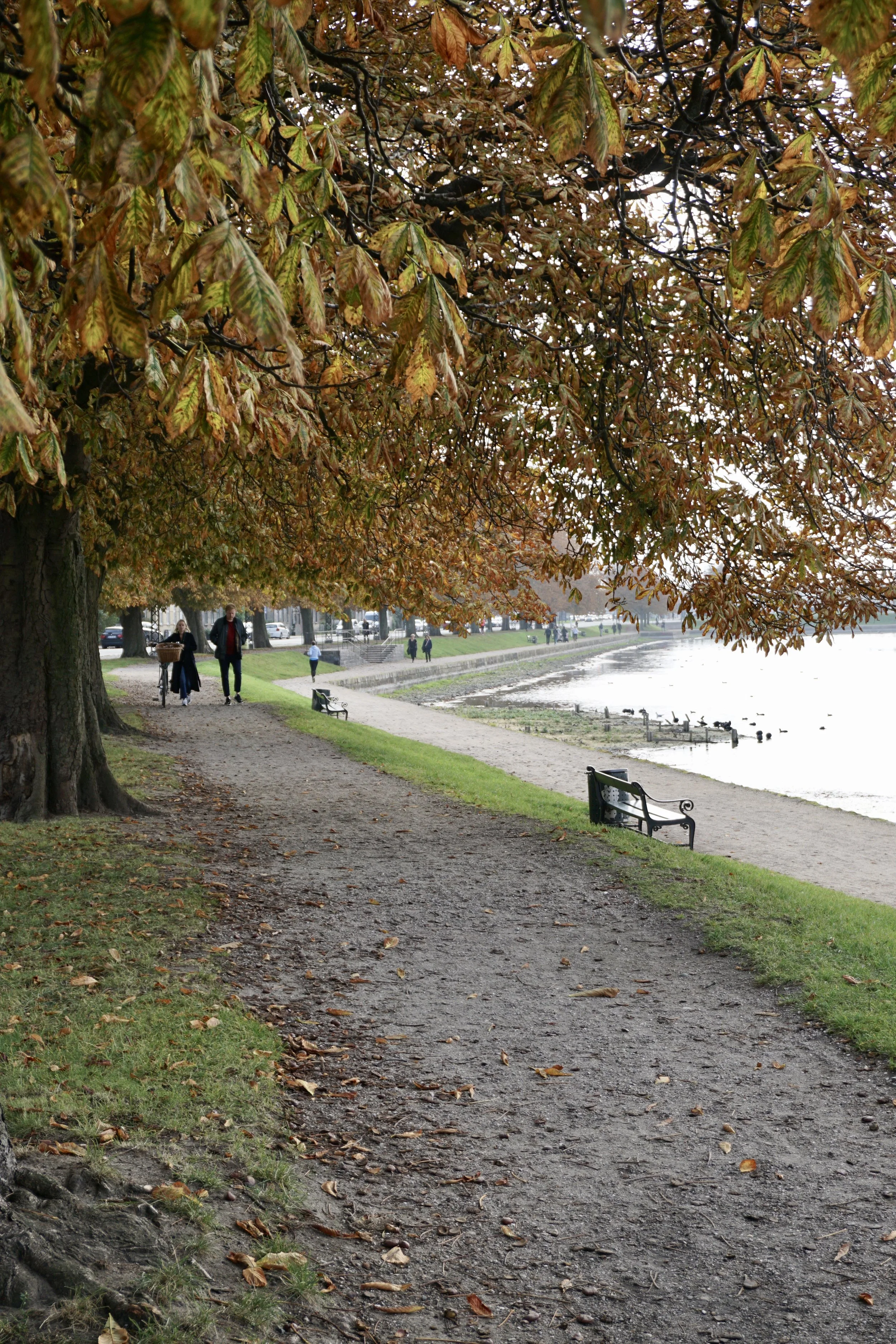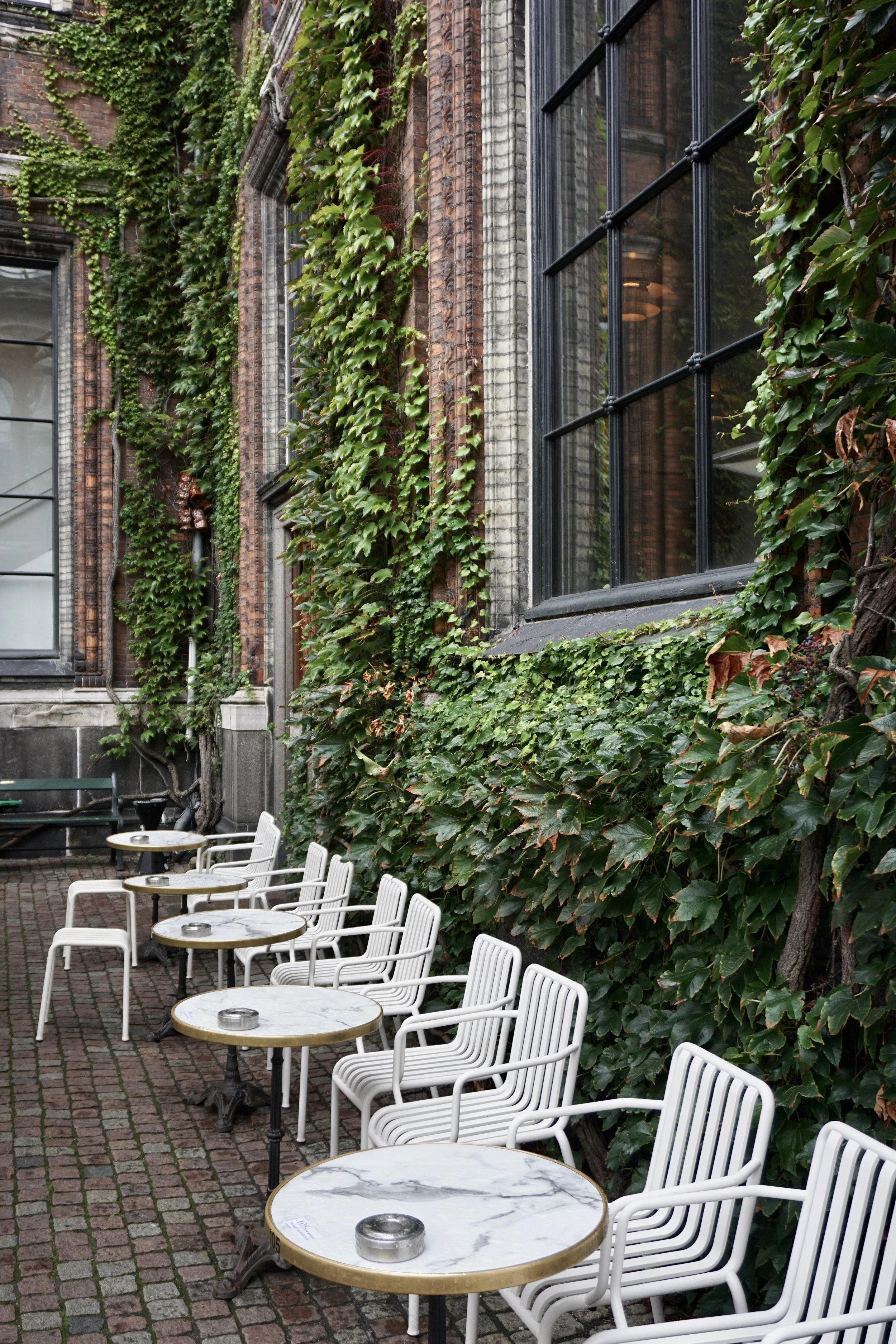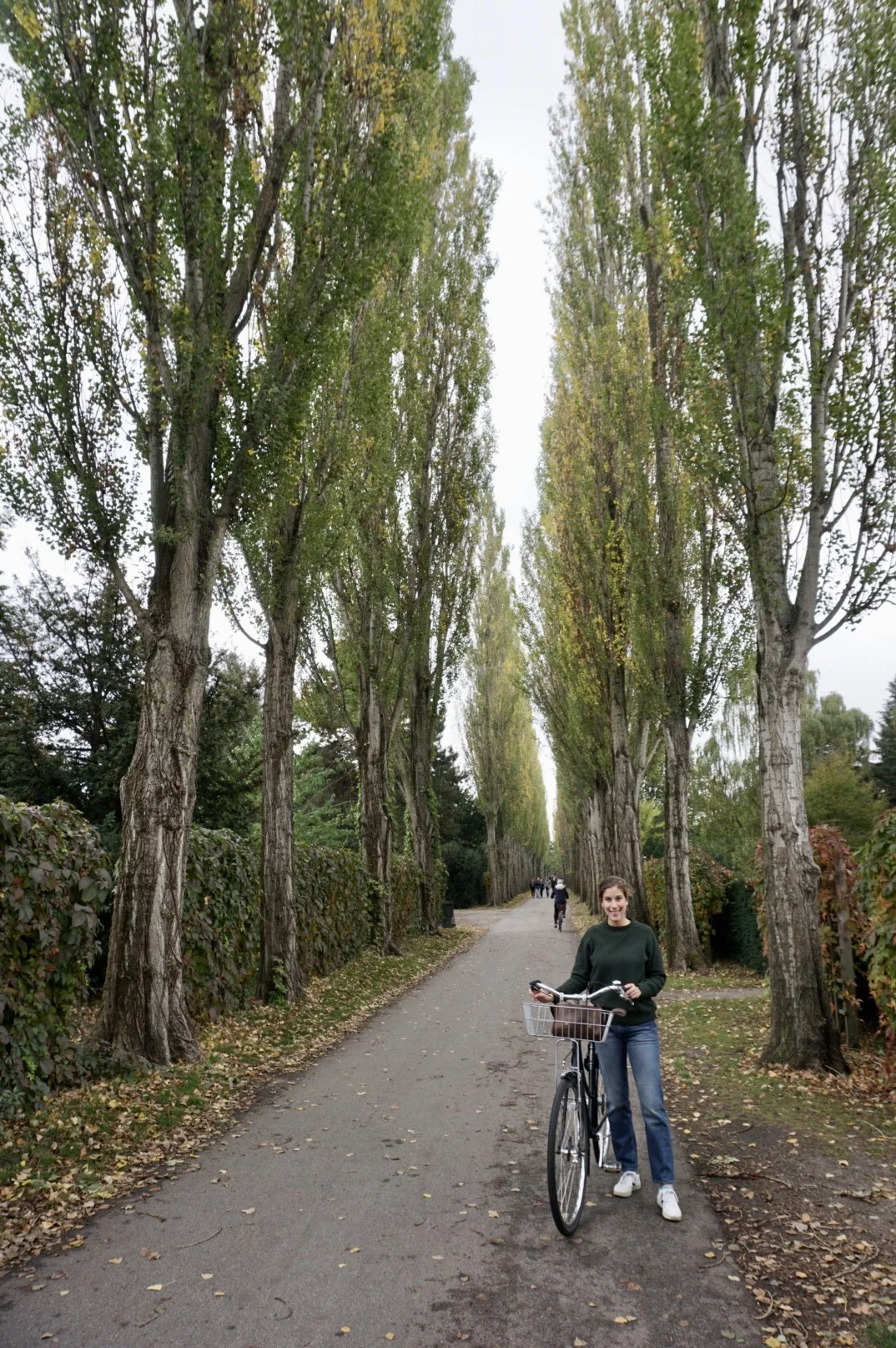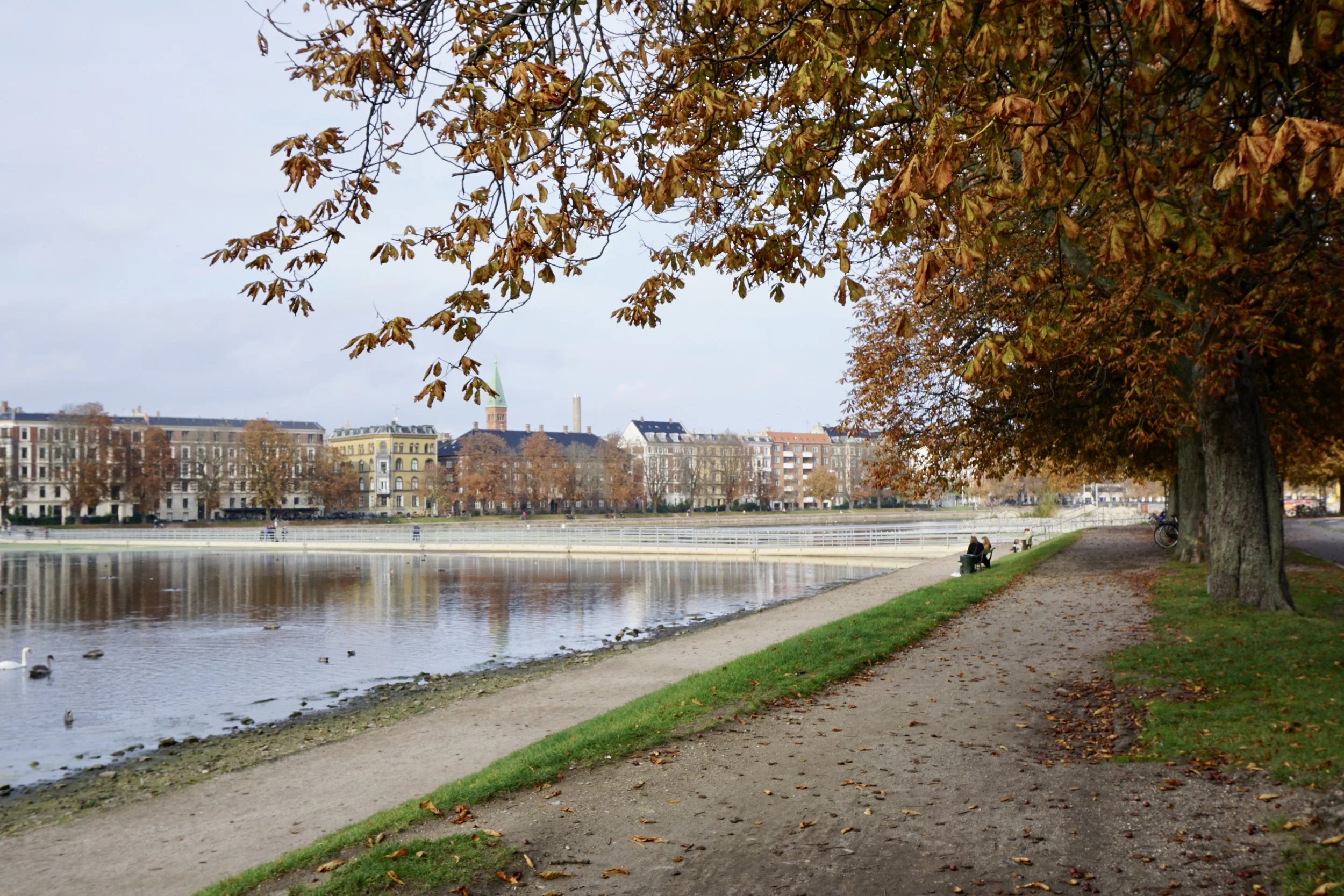If Stockholm is Europe’s “crown jewel”, then Copenhagen is its freer, nonchalant younger sister. Understated and elegant, this design capital lived up to my every expectation. While uniformity seemed to pervade every facet of life in Stockholm (race, dress, aesthetic, societal norms), there’s an element of diversity and grittiness in Copenhagen that was refreshing. Though it’s possible to get a handle on the city’s layout in just a day or two, the city feels expansive if you explore the off-beat outer neighborhoods.
The best urban element of Copenhagen is that bikers and pedestrians rule the streets. The city is designed around them. But what struck me most about Copenhagen’s buildings and cobblestone streets as I wandered by foot, bike, and bus was the mingling of old with new, of classic design with contemporary lines, of preservation and history with progress, of streets lined with muted greys and shades of beige followed by corners of bright red and yellow homes. That contrast is everywhere, and part of what makes the city such a desirable place to call home.
frama & oliver gustav
Copenhagen’s Nyboder District, known for its rows of miniature ochre-colored cottages that formerly served as barracks for the Royal Danish Navy, is home to perhaps my favorite Scandinavian design studio: Frama. I discovered Frama in Stockholm, and was eager to check out their headquarters and studio store in Copenhagen.
Frama’s design pieces “focuse on natural materials, simple geometry and a general appreciation of permanency.” I am so drawn to this. Its home in an old 19th century pharmacy filled with wood, plaster, metal, and marble feels just right. I had been eyeing their Fundament brass candle set for months, and managed to snag their used floor set at a steep discount. The specs of oxidization and tarnish from their use in Copenhagen’s studio make the set even more precious to me.
Oliver Gustav is another space I loved, recommended by the team at Frama. His boutique and design studio has a more earthy and monochrome style, but is supremely peaceful to wander through.
passageways & curves
Copenhagen is a city inspired by light and water. These were recurring themes in the architecture, from the grandest church to the tiniest passageways and hidden courtyards. Curved staircases and arched tunnels and spectacular light-filled historic buildings might be the strongest memory of my entire visit. The following passageways aren’t easy to find, but the adventure is in the search: Pilestraede 45 (look for the shop Heartmade), Pilestraede alley, and Kolstergangen.
The Rundetårn observation tower is easier to find, and just as captivating. I spent more time in the winding, white-washed Spiral Walk than I did at the top of the observatory overlooking the city. The round tower was built in the 17th century, the spiralling brick corridors used to transport horse-drawn wagons dragging heavy equipment. A decent bus ride out of the city, Grundtvig's Church is well worth the journey. It was built with 6 million yellow bricks in honor of Danish priest, poet, and reformer who preached “human first, Christian second”.
Nyhavn
Nyhavn, the waterfront and canal district lined with colorful townhouses, is an iconic place to explore. The misty, quiet fall mornings before the shops and cafes all open is the best time to wander by foot here. Generally, navigating Copenhagen was a joy. It takes a day or two to master the train and bus system and bike paths, but then the city is all yours. I was taken aback by the ticketing process for public transit, though — you’re supposed to buy tickets, but they aren’t not required to access the train, and are checked at random. (So why buy one? If you’re that lucky rider who gets caught without a ticket, you’ll be fined the equivalent of hundreds of dollars.)
Louisiana Museum of Modern Art
About 40 minutes north of Copenhagen, set on the Danish coast, is the Louisiana Museum of Modern Art. Named after the original property owner who had three wives named Louise, the museum is now a renowned balance of stunning landscape and modern art. I loved the Giacometti sculptures, the Moon exhibition, and the portraits of female fighter pilots from WWII.
Frederiksberg
I stumbled upon Assistens Cemetery in Frederiksberg accidentally. (This burial site in the midst of the city is so beautiful; there’s even a section devoted to homeless people to give them a dignified resting place.) It’s a calming green space to walk through, and an introduction to the upscale neighborhood. Coffee Collective’s best location is here.
Christiania
Freetown Christiania, Copenhagen’s anarchist commune, is home to about 1,000 hippies — they fly their own flag, use their own currency, and are governed by their own rules. Off of Pusher Street, this neighborhood is colorful and quiet. For homemade, vegetarian fare and the best people watching, have lunch at Morgenstedet.
eat & drink
Working east coast hours in Europe meant mornings free to explore, and mid-week lunches at the very best spots without the crowds. Admiralgade 26 stands out as one of my favorite dining experiences. It’s tucked away on an unassuming corner in Indre By, and I guarantee you’ll never want to leave. Another lovely cafe to linger at is Atelier September — the space and menu are inspired by traditional Japanese cuisine, and their avocado-topped rye bread has a well-earned reputation. Check out the concept store in the back.
Instead of seeking out Nordic cuisine, I found myself at the city’s best Italian and French restaurants: Spaghetteria for their fixed menu (6 antipasti dishes, 2 pasta dishes, dessert), Baest for the (actual) best pizza of my life (still dream of that stracciatella), and hidden French spot Beau Marché for candlelit coffee on a rainy morning.
Apollo Kantine is a unique concept: students and workers can eat here cheaply, cafeteria-style, and the general public is also welcome to the dish of the day. The stalls at Torvehallerne (specifically the porridge at GRØD) and the ambience at Manfreds were other highlights. For a cup of coffee and a bowl of hazelnut milk porridge, bike over to Noma’s sister restaurant 108.
Located at the very end of the peninsula of Refshaleøen, set just next to the sea, is La Banchina. It’s a 16-seat shack-style restaurant and wine bar with a wood-fired sauna and docks for sunbathing and summer dips.
Hotel Sanders
For my last weekend in Copenhagen, I negotiated a stay in the Coupé room at Hotel Sanders. The hotel is owned by a former dancer for the Royal Danish Ballet, and I had read about his vision for the space. The Coupé room is thoughtfully designed specifically for the individual traveller and every detail is considered.
what to bring home
Strøget is one of the longest pedestrian streets in Europe and is situated just next to a tangle of charming, cobblestone streets teeming with lovely boutiques and lifestyle shops.These were my favorites:
— Another Nué and Nori Nori for a curated selection of Danish and international brands (where I discovered Totême)
— Sur le Chemin for timeless, sustainable pieces
— Norse Store for understated essentials
— Stilleben, a Scandinavian lifestyle shop with beautiful original wall prints and bed linens
— Wood Wood for streetwear (and amazing jeans)
— Tortus to admire Eric Landon’s ceramics studio and recent creations
— Keramik & Glasværkstedet, where four Danish artists showcase their porcelain, clay, and glass products
— Dansk Made for Rooms, a gorgeous Danish lifestyle and homewares shop
— Rains for iconic Danish rainwear
— Hay House full of funky, inventive furniture for sale (pick up one of Richard Woods hand-painted stoneware mugs)
A few spots on my list for next time: House of Finn Juhl, Botanisk Have, Mangia, The Apartment, Ved Stranden
